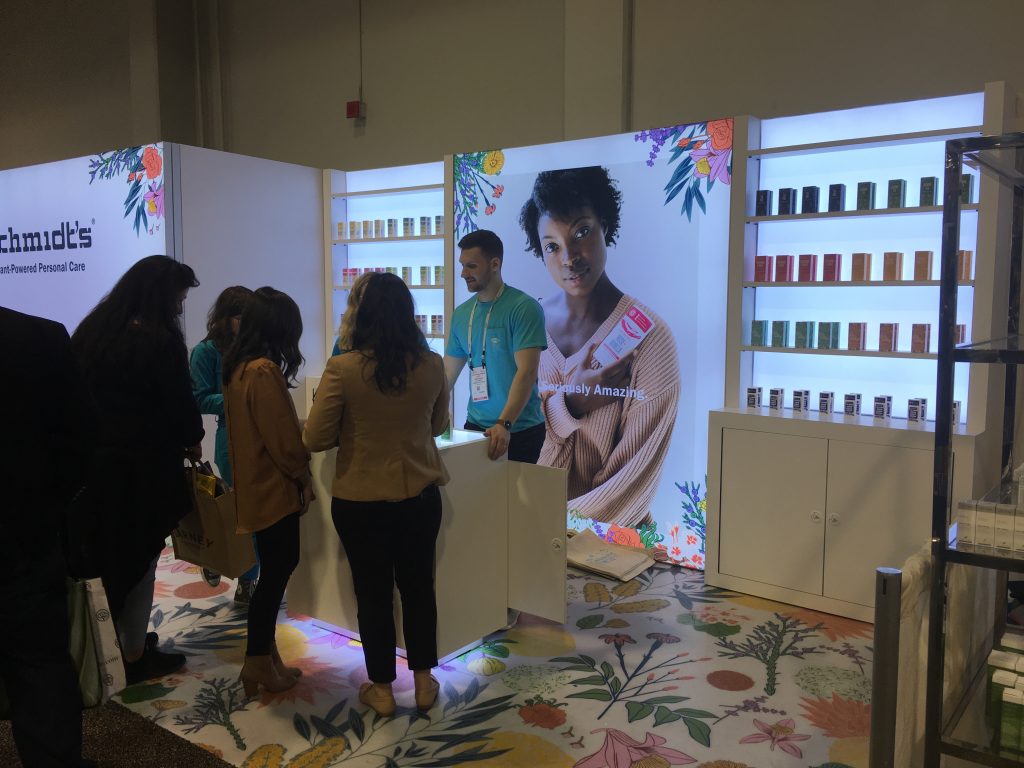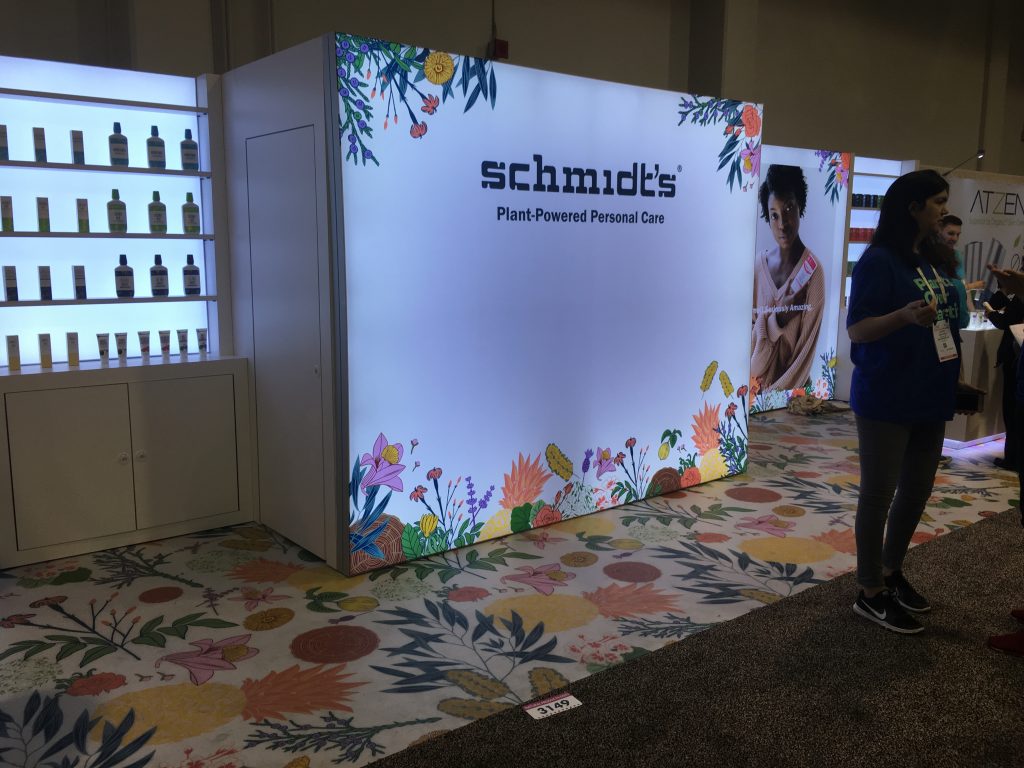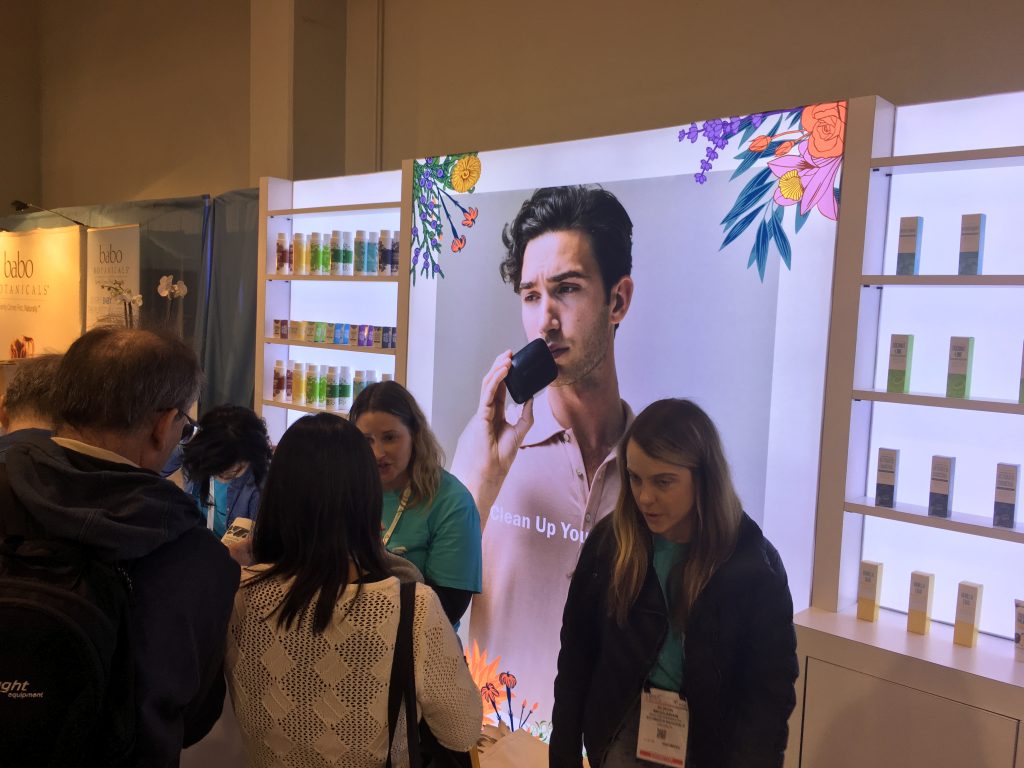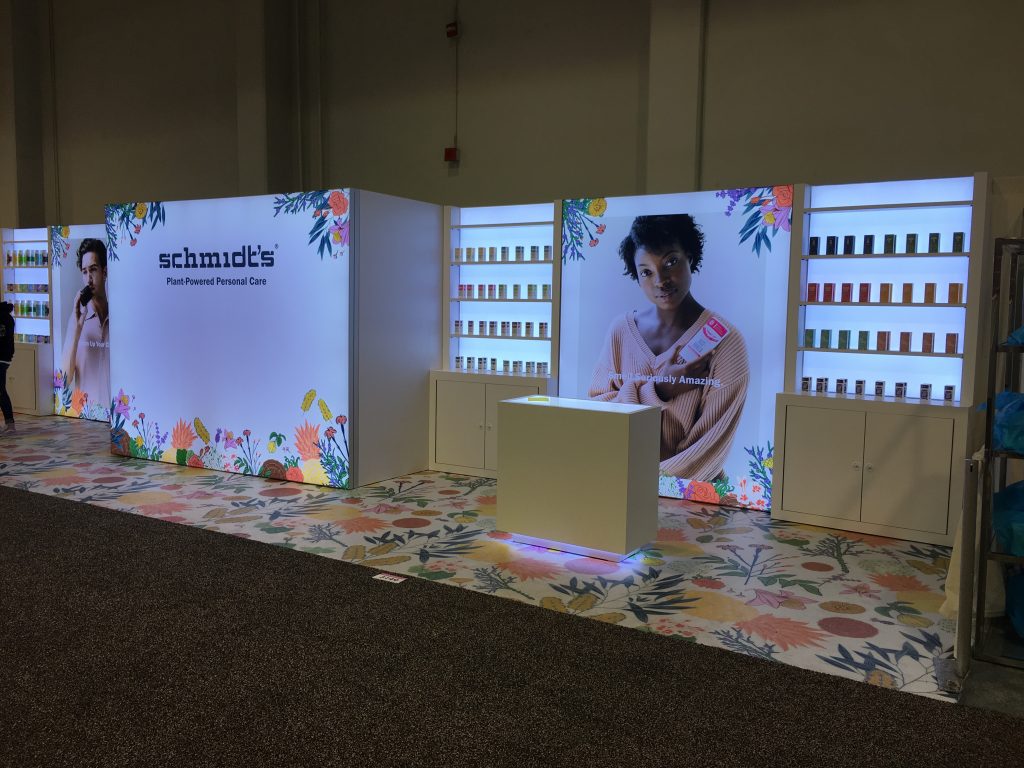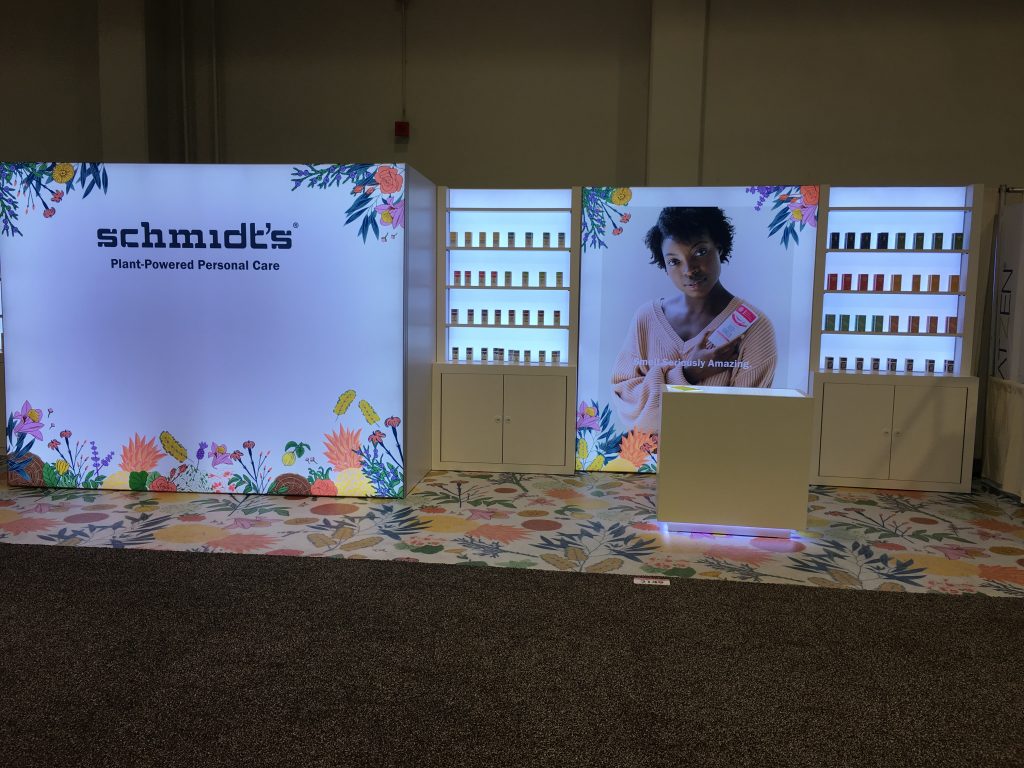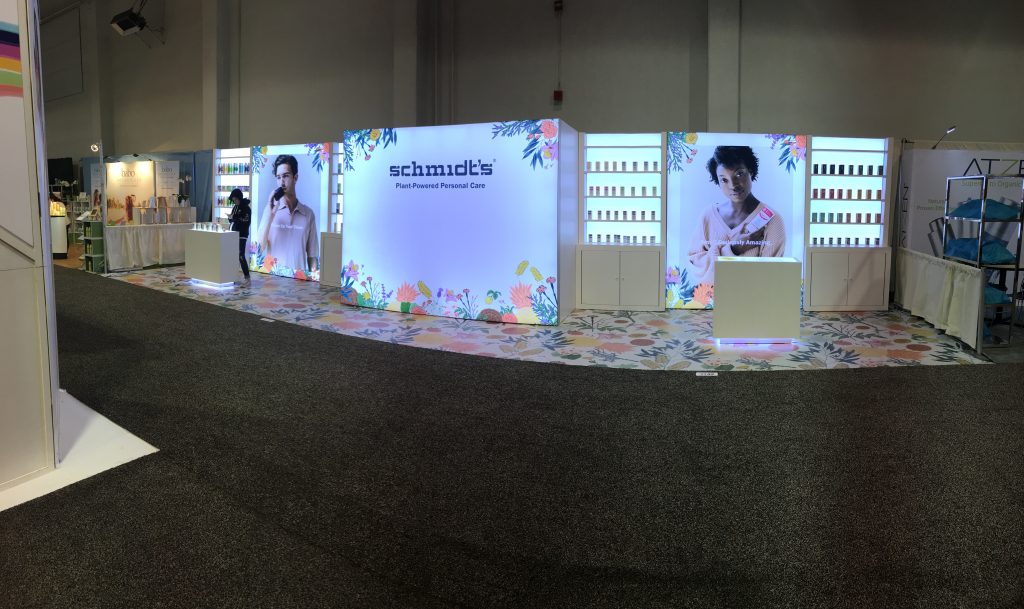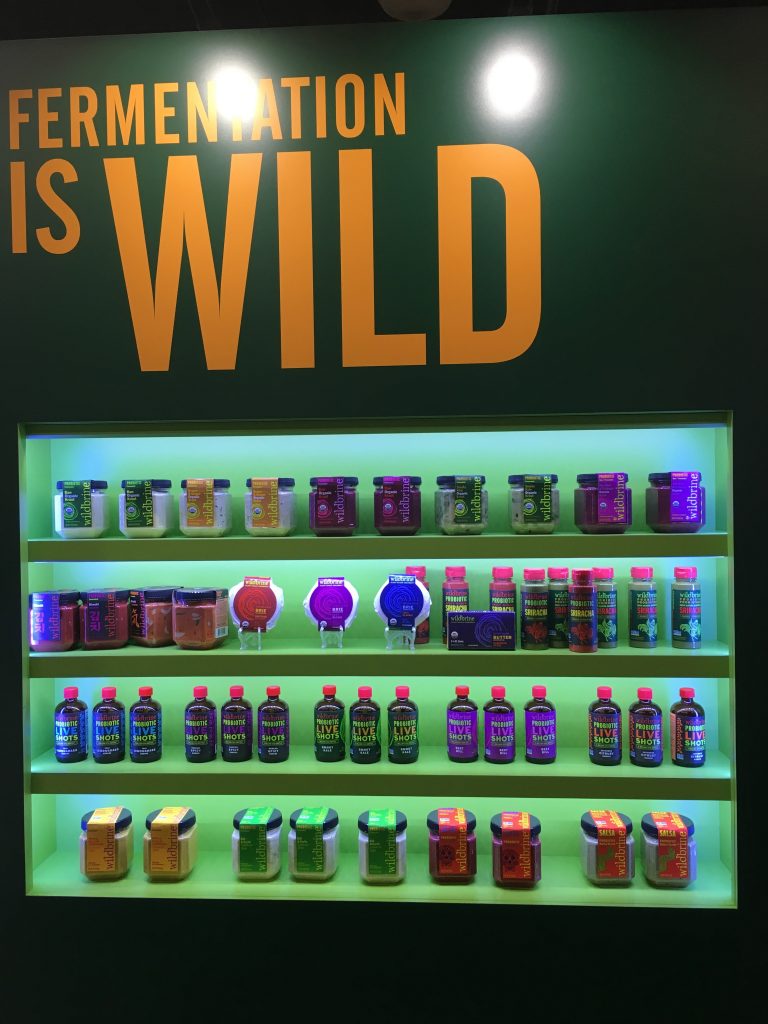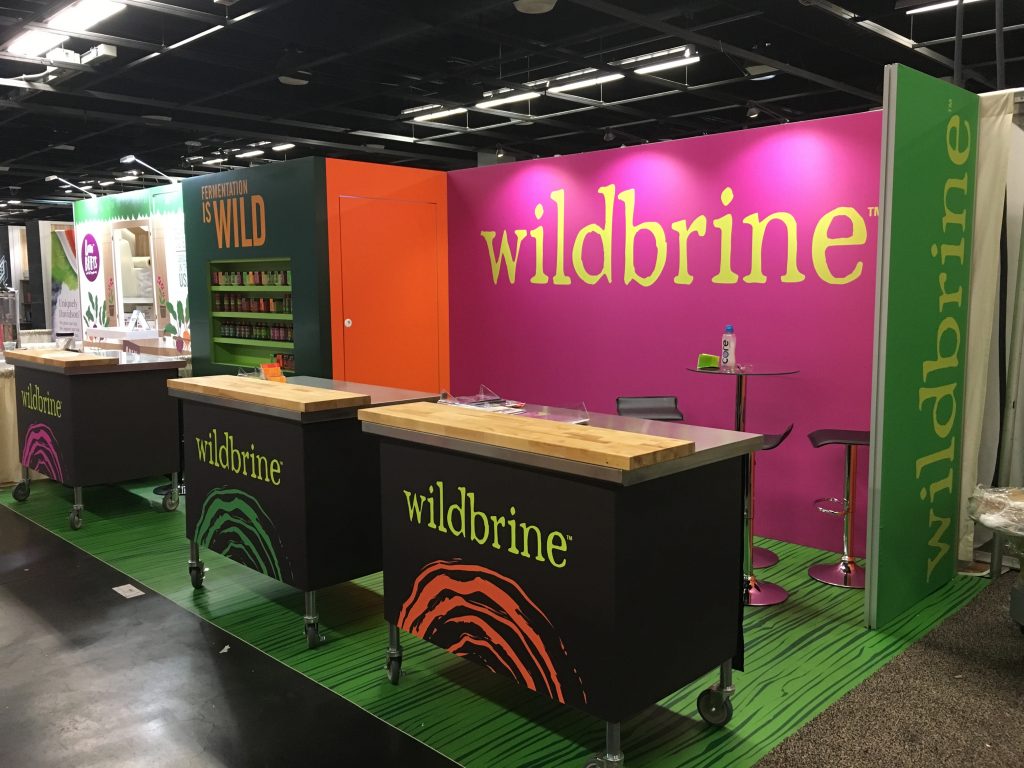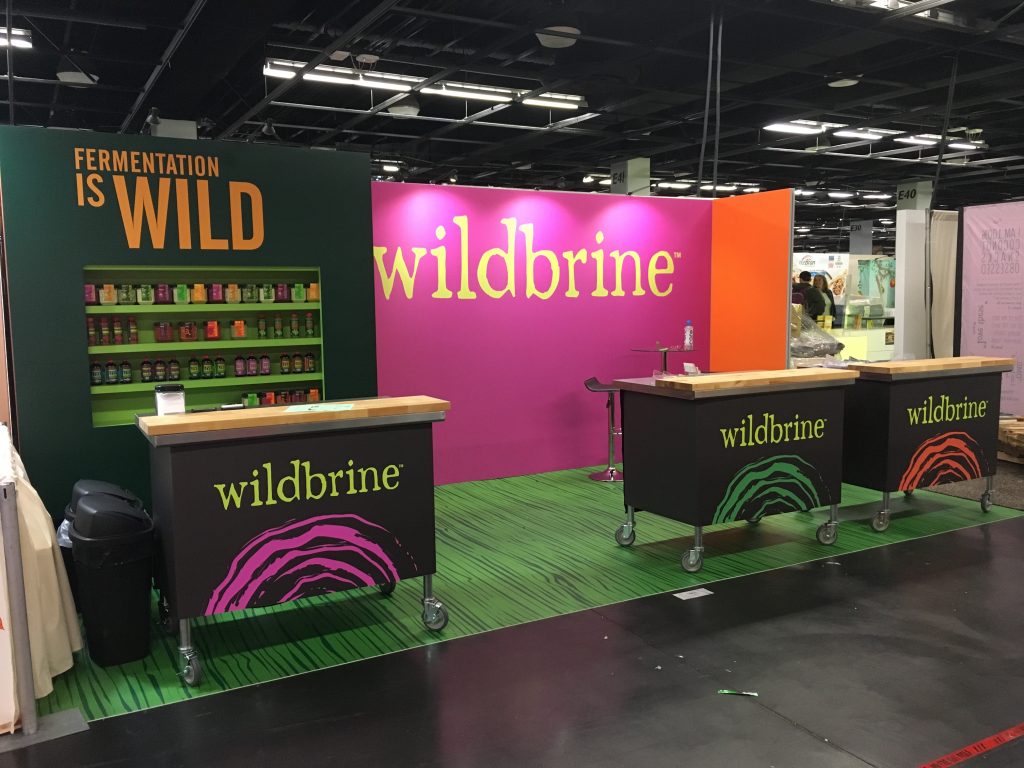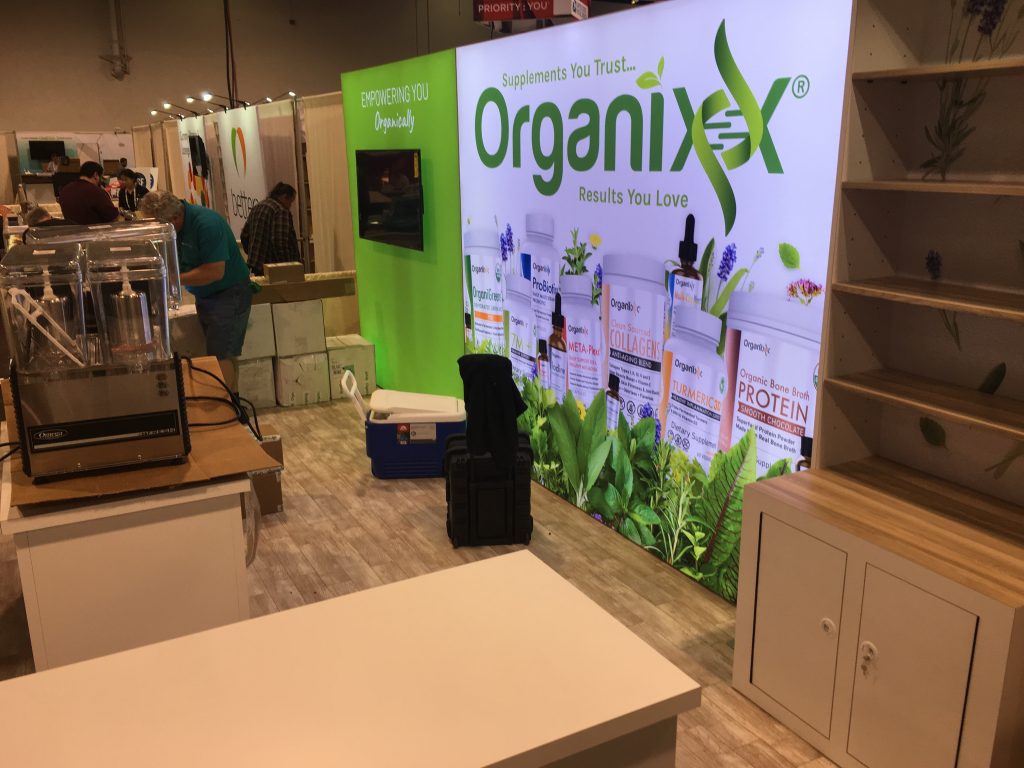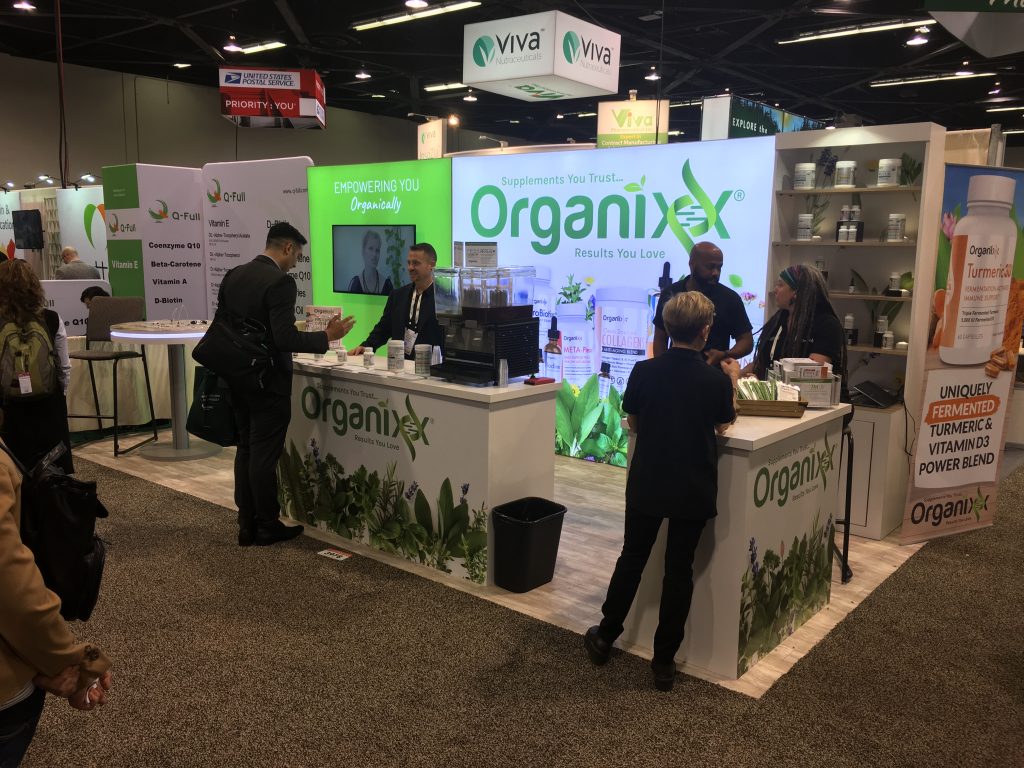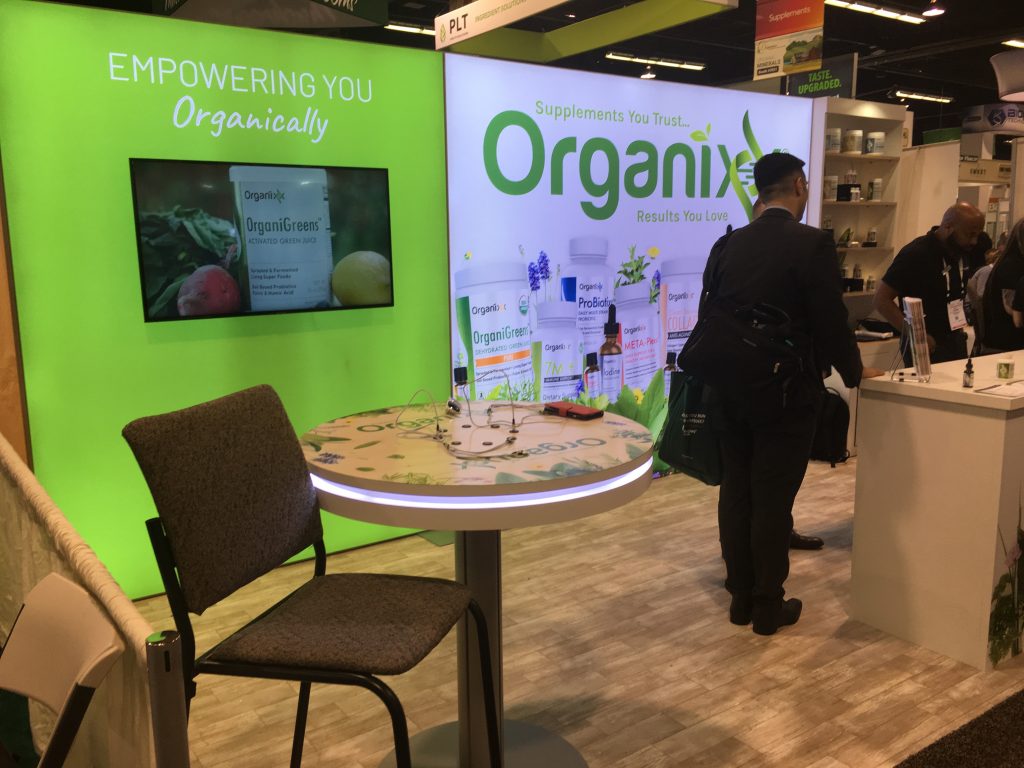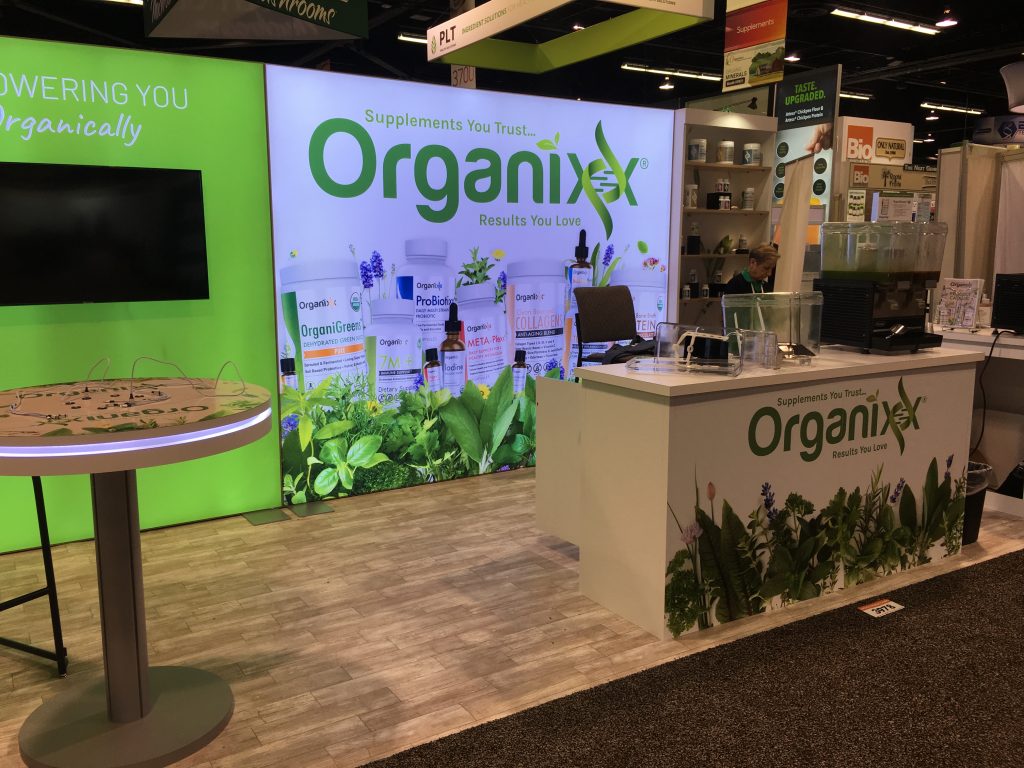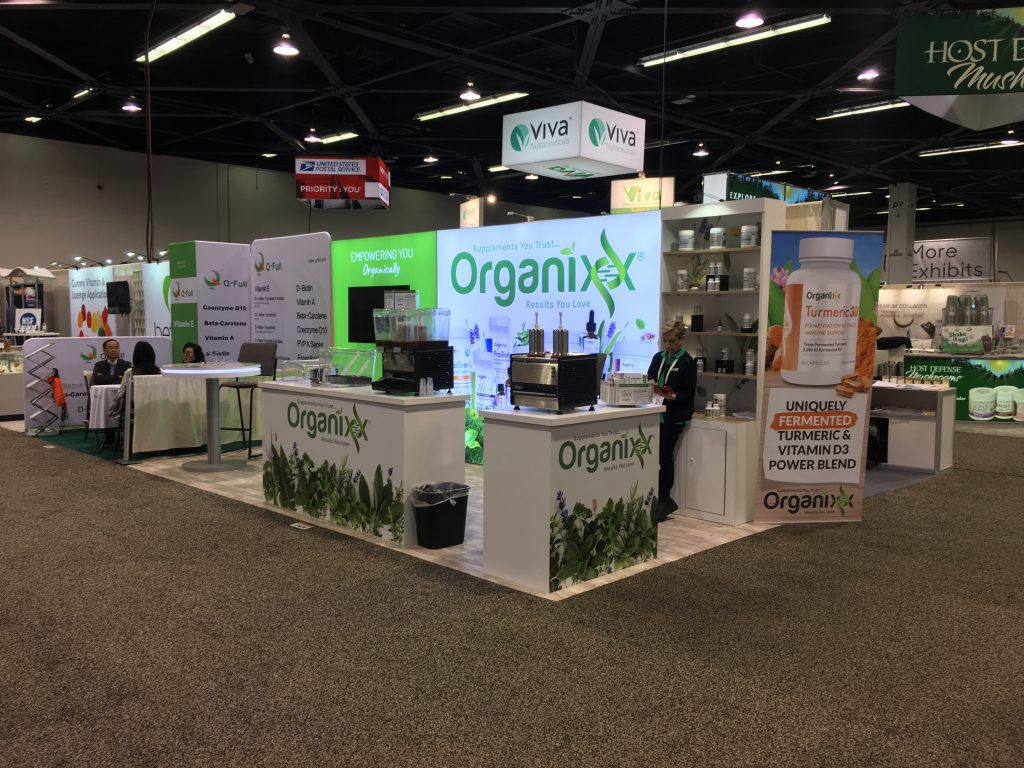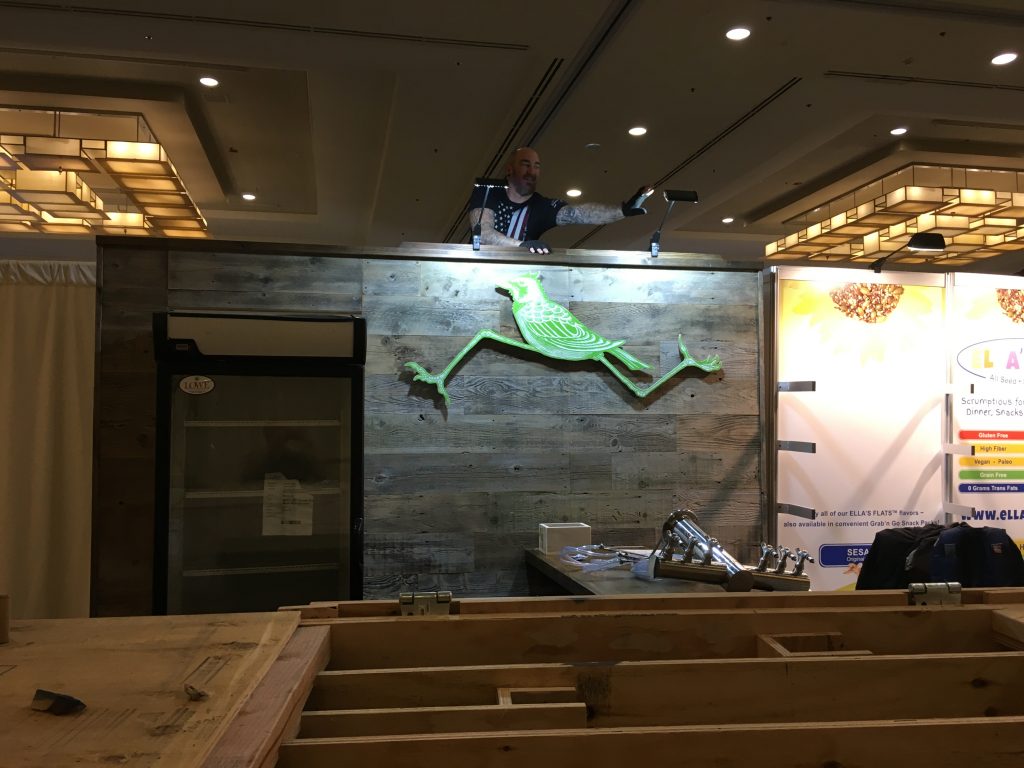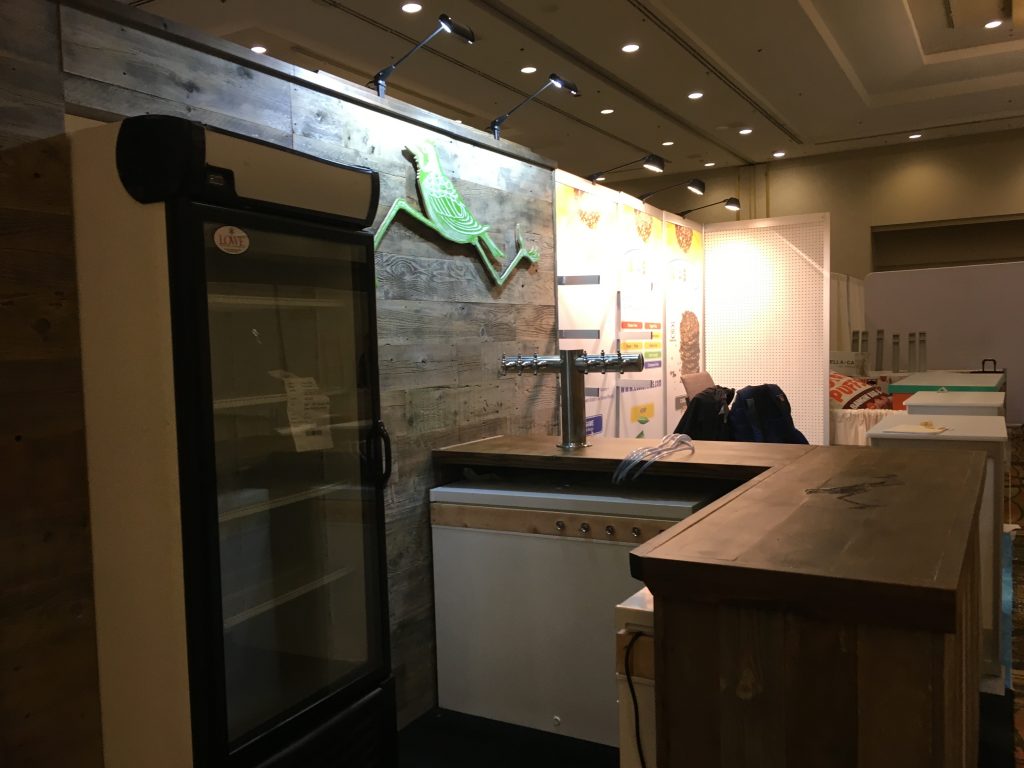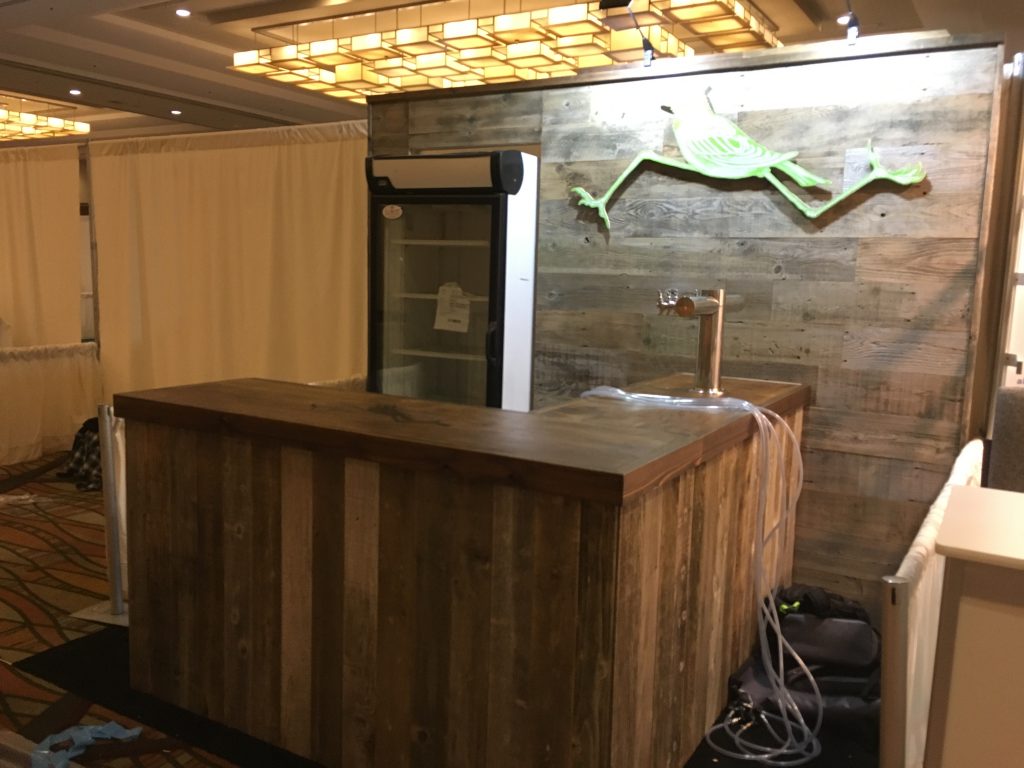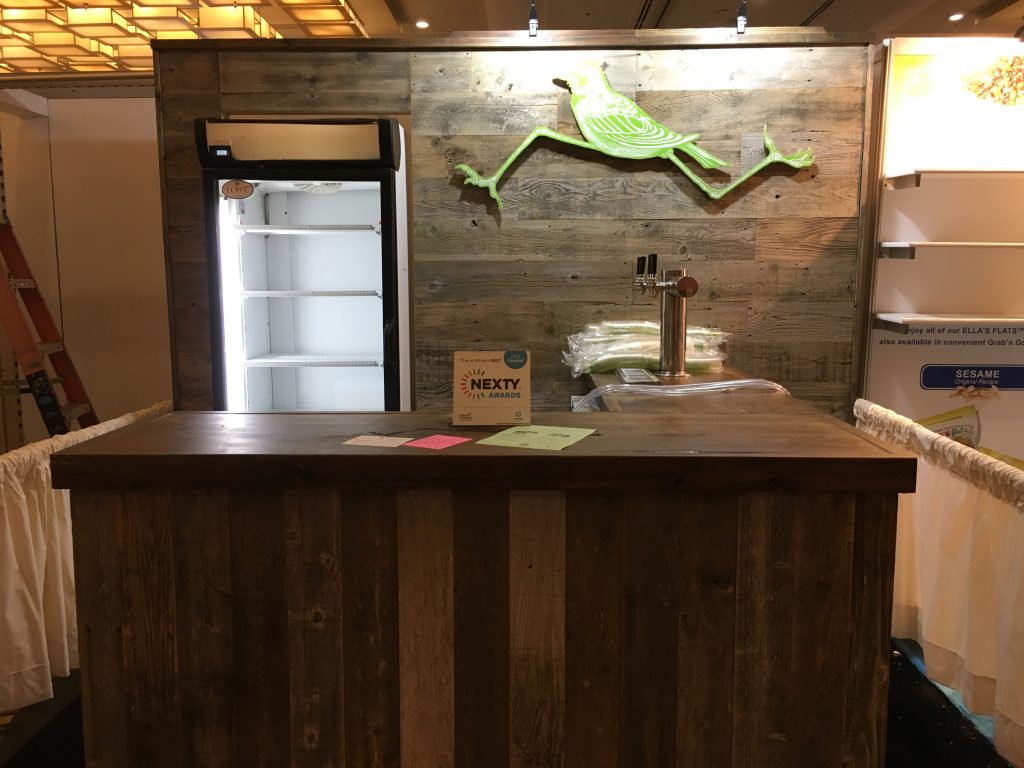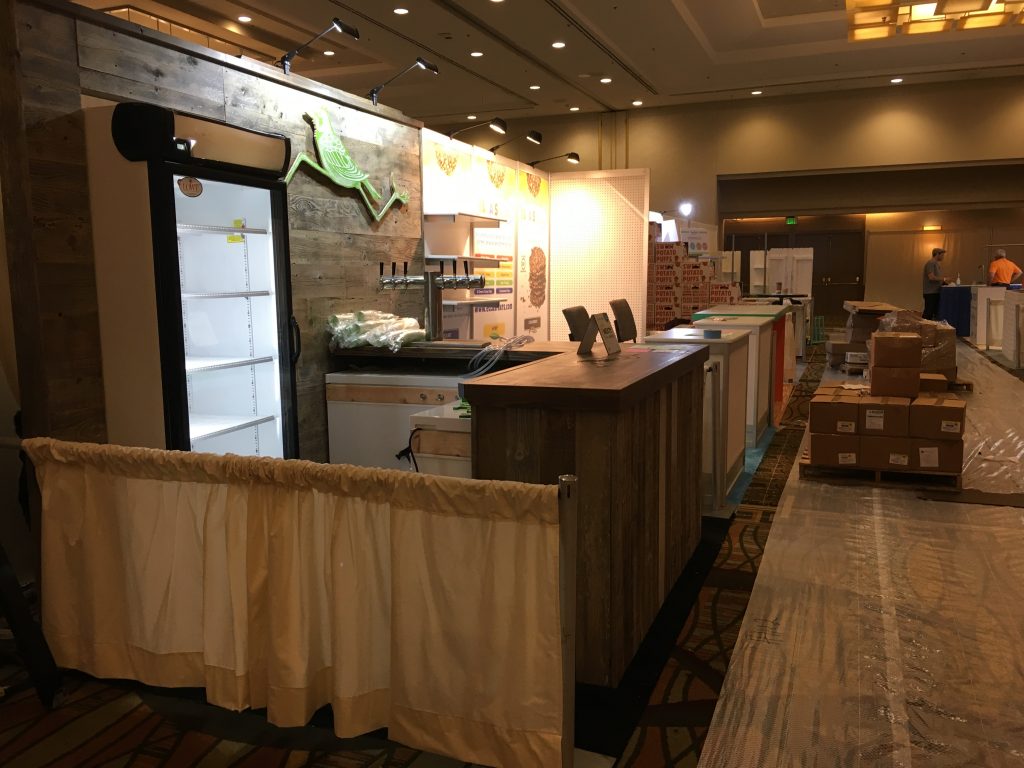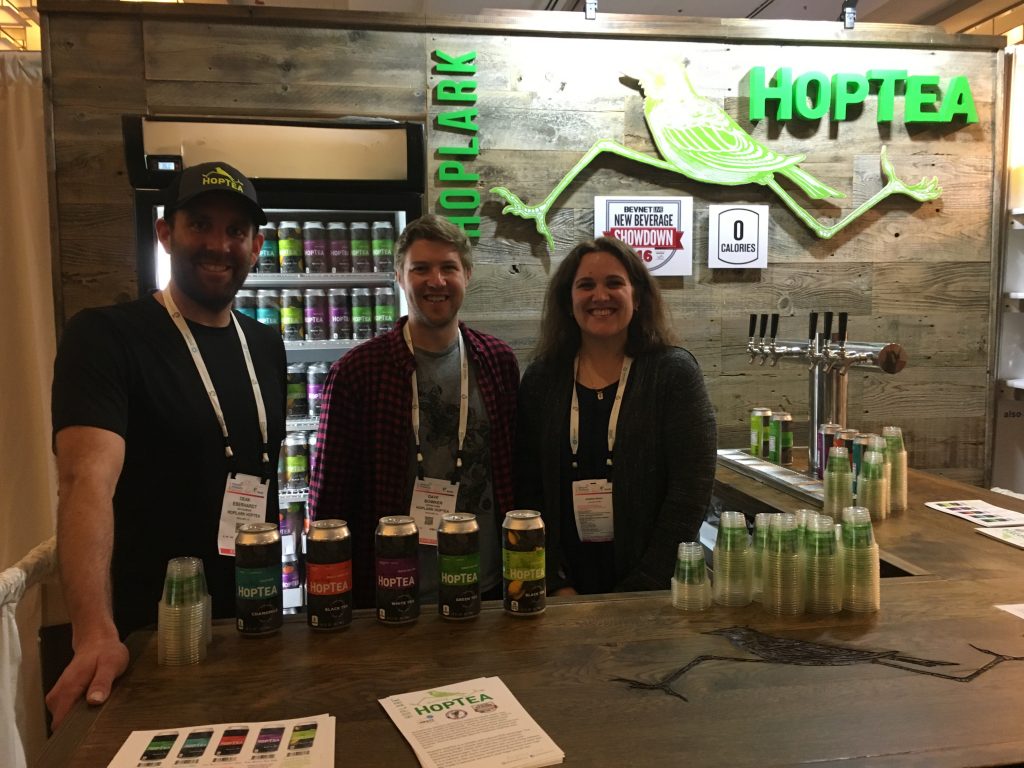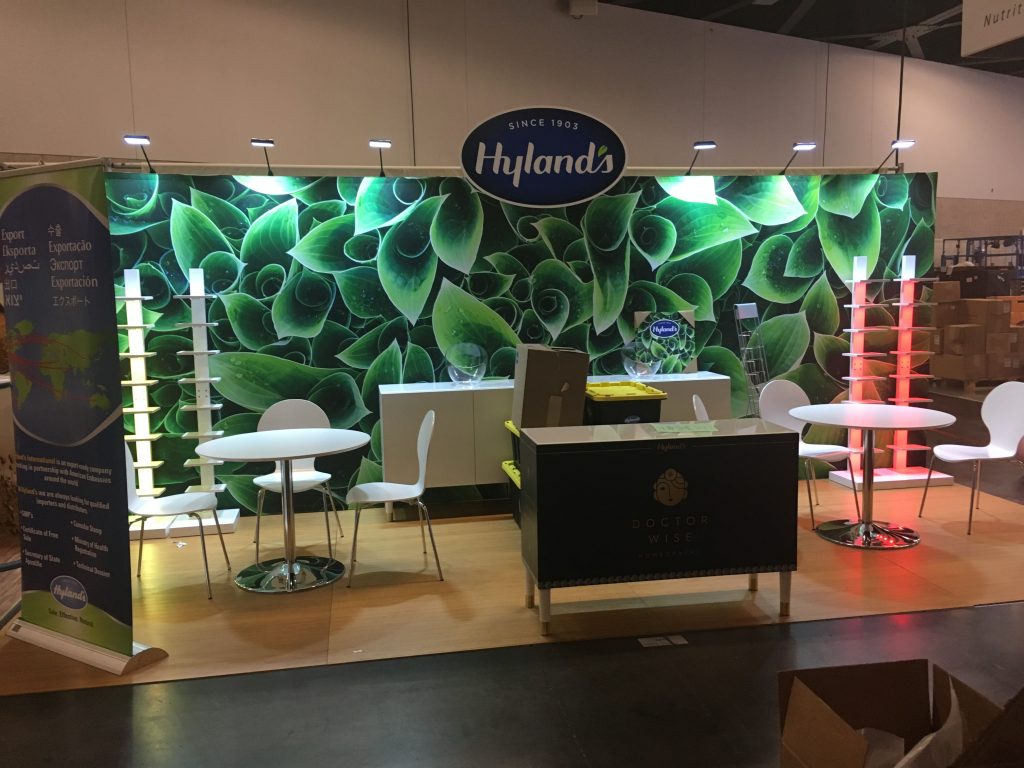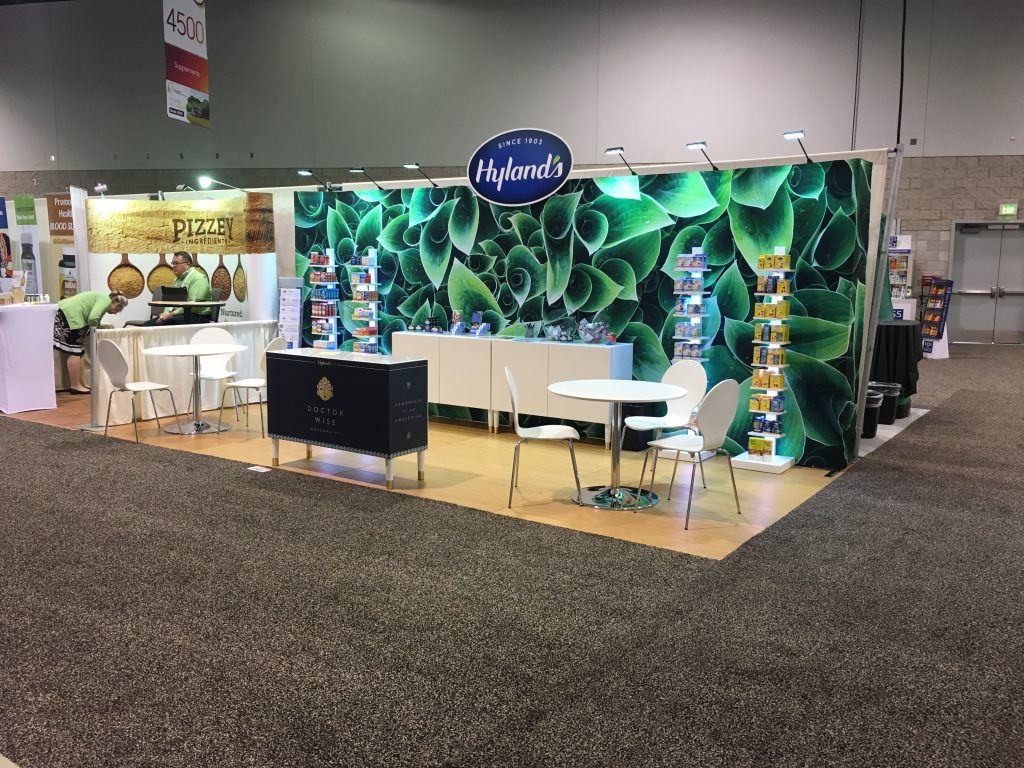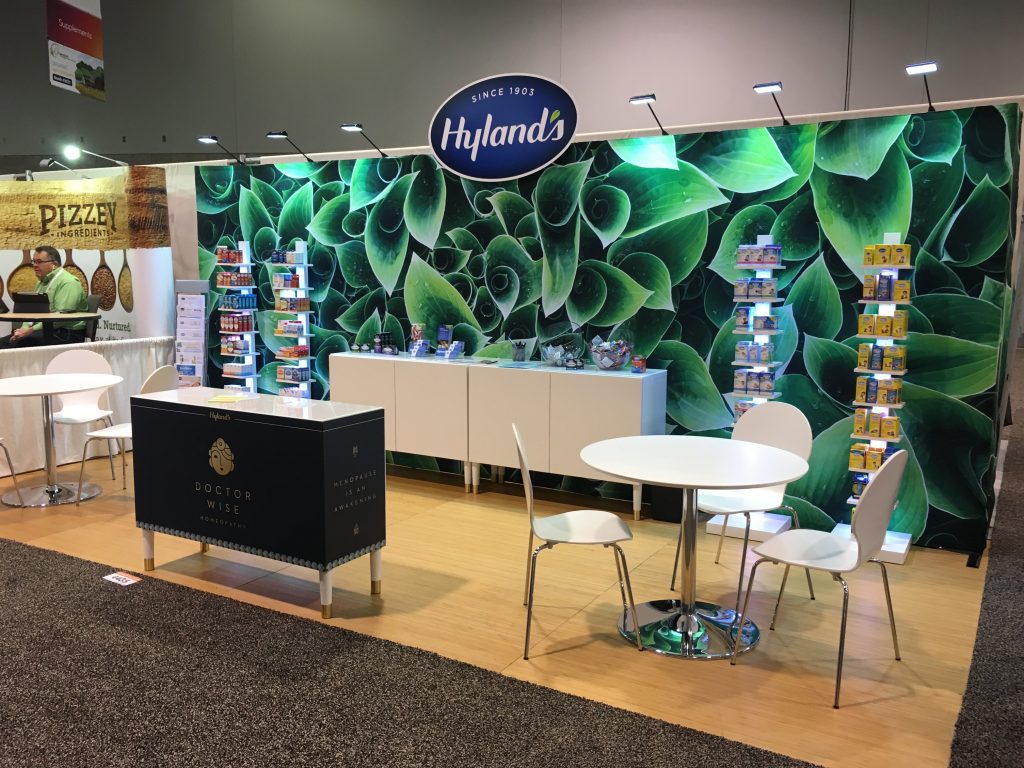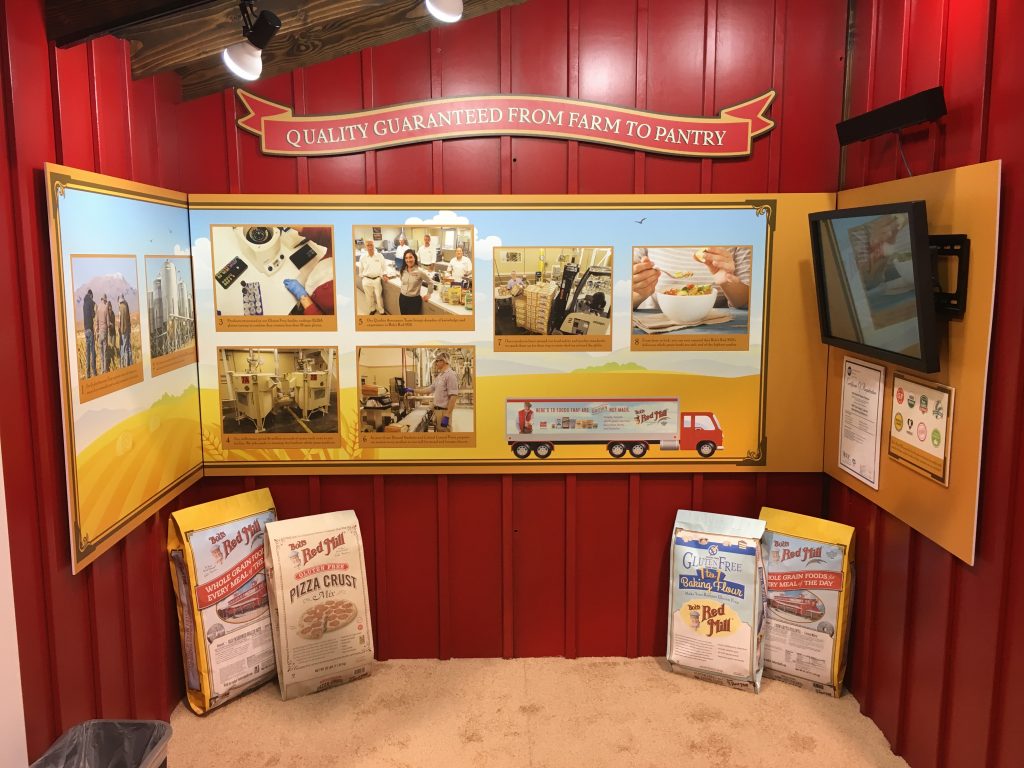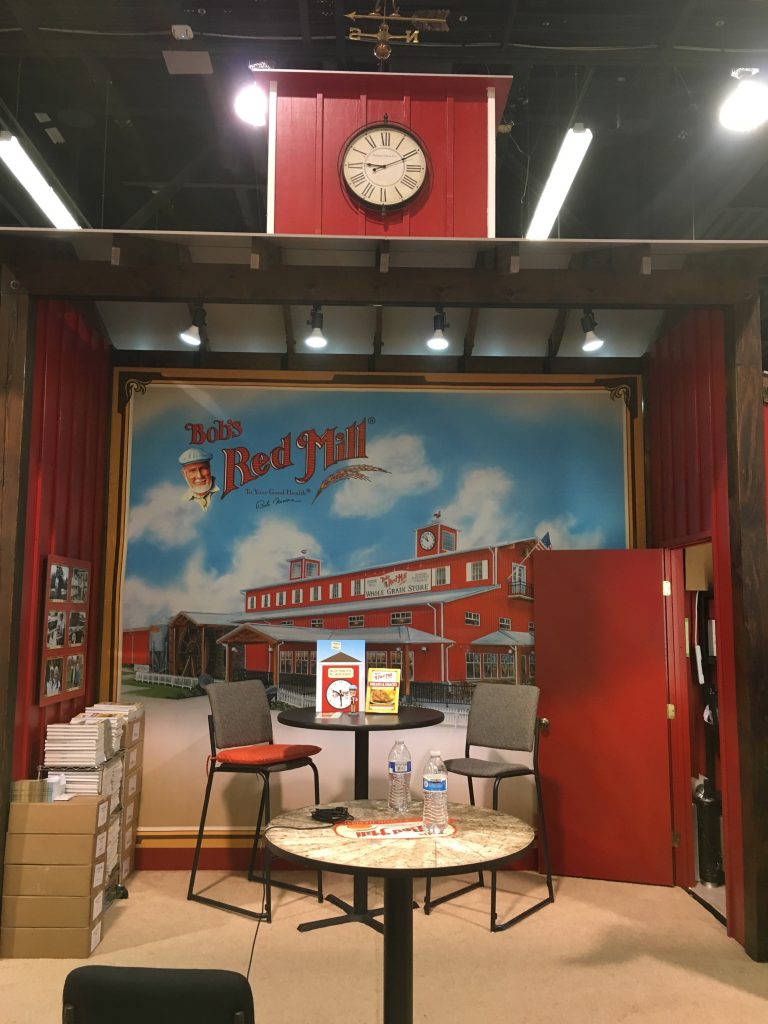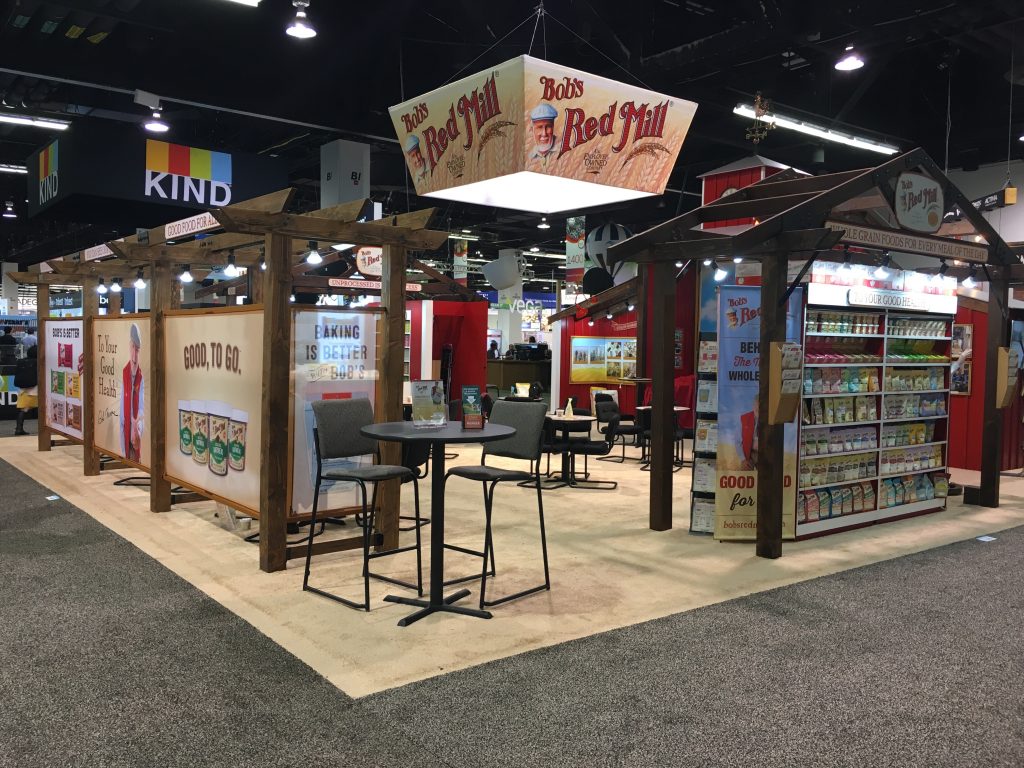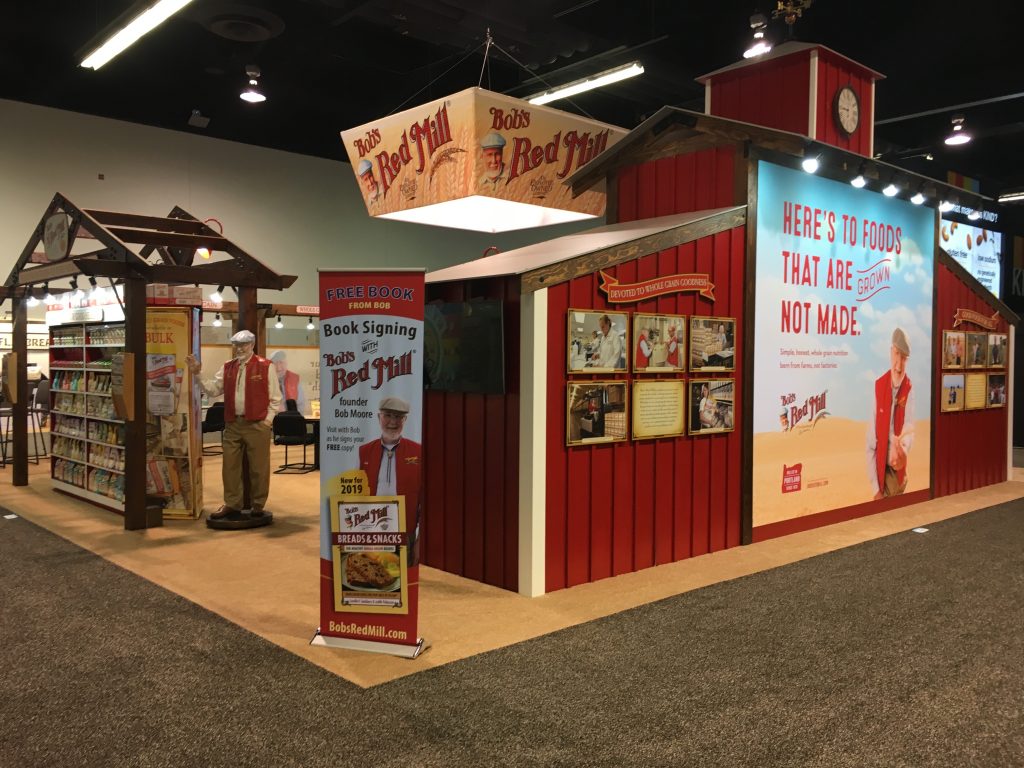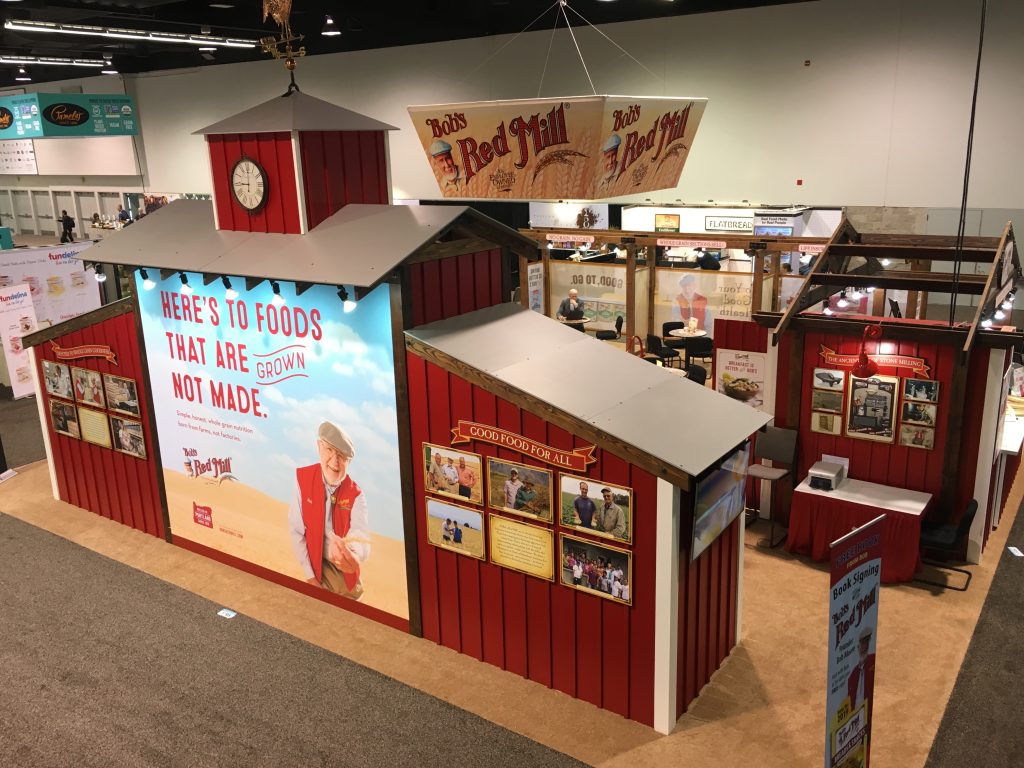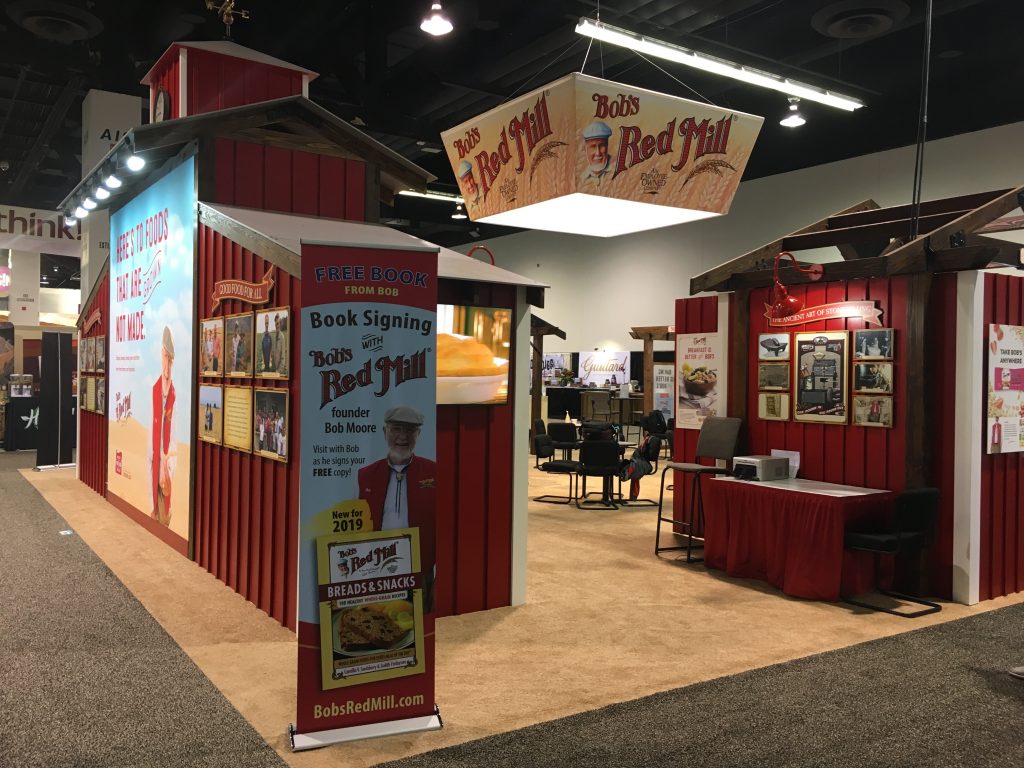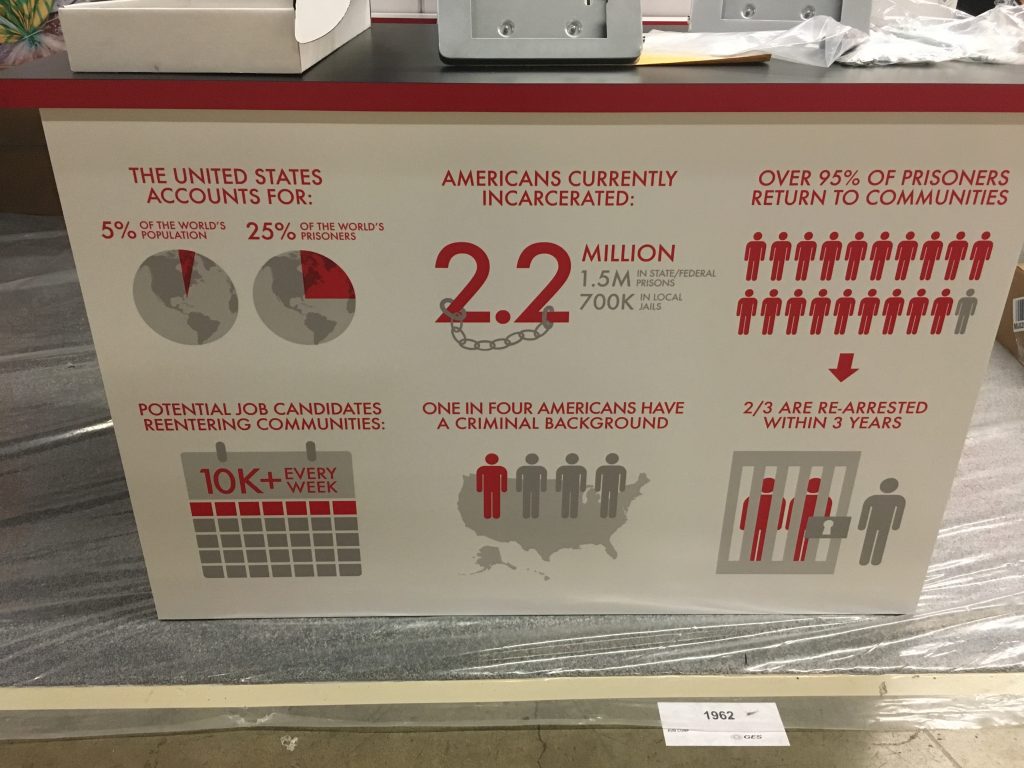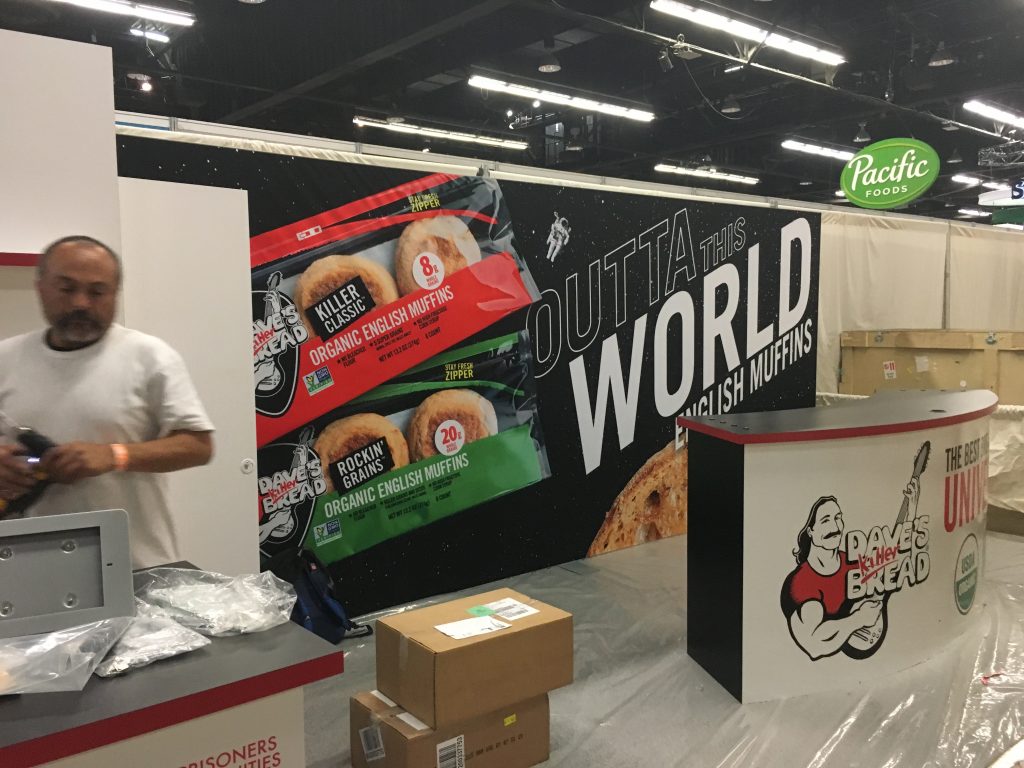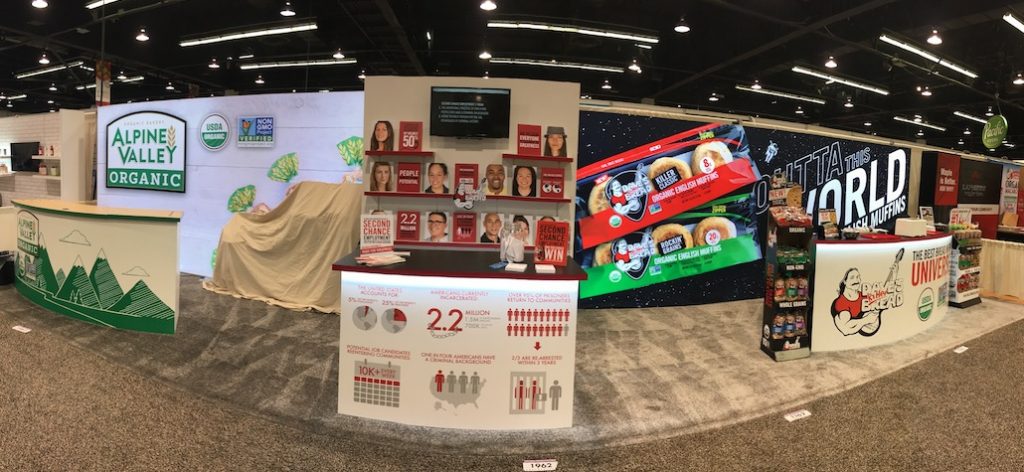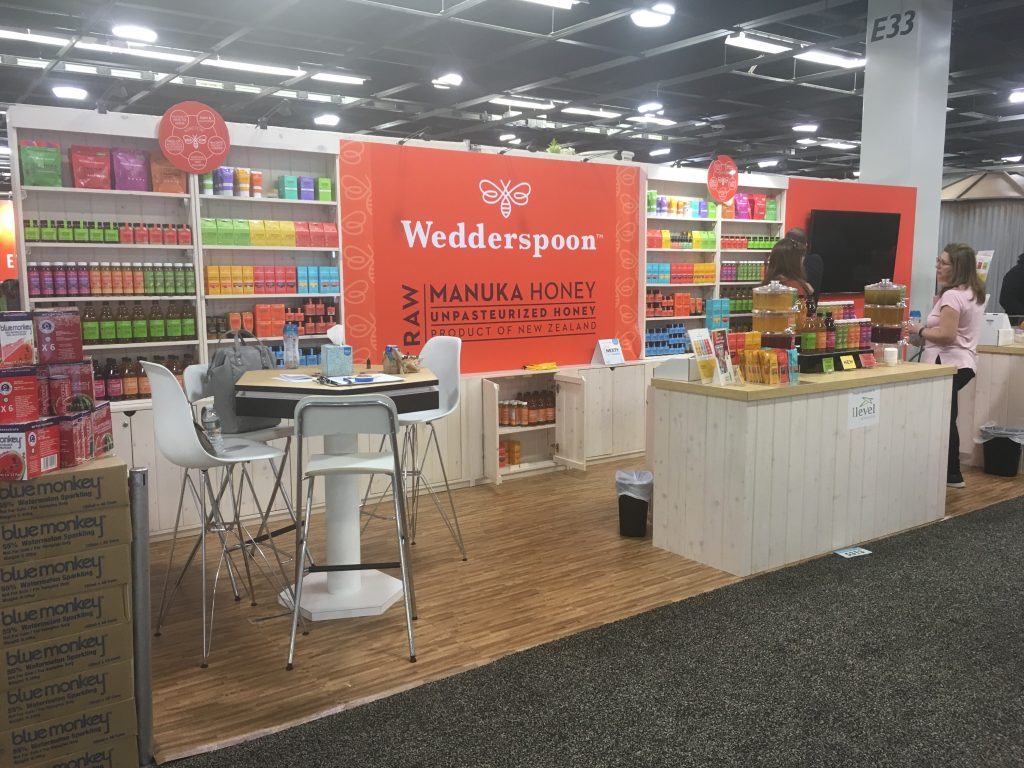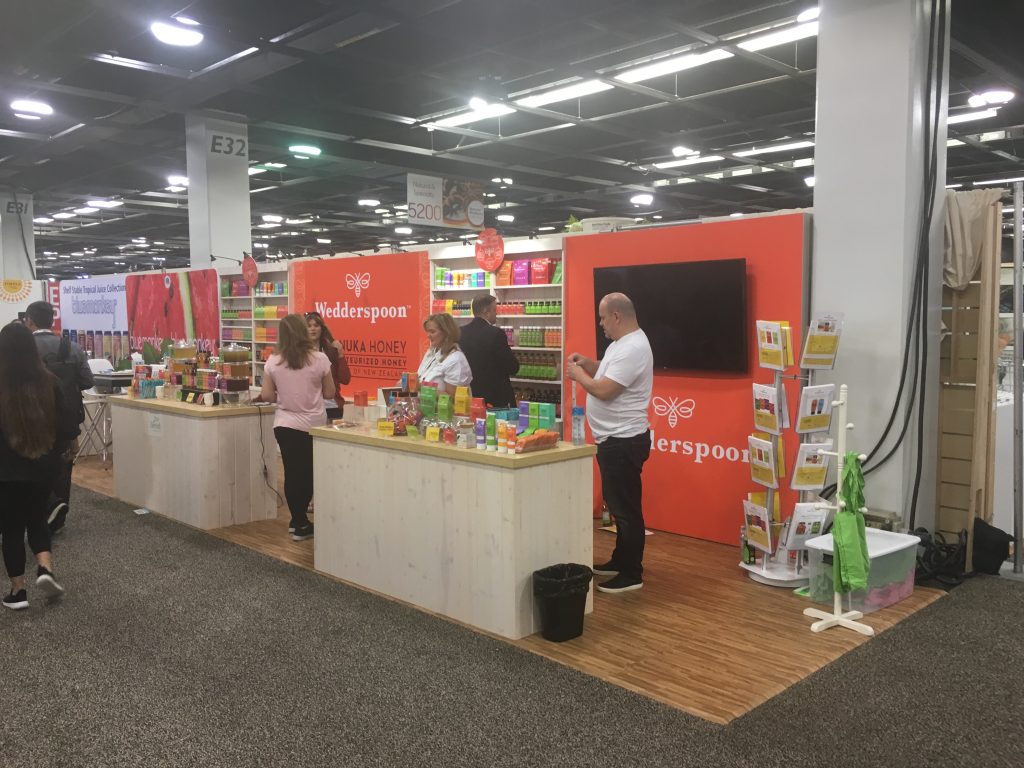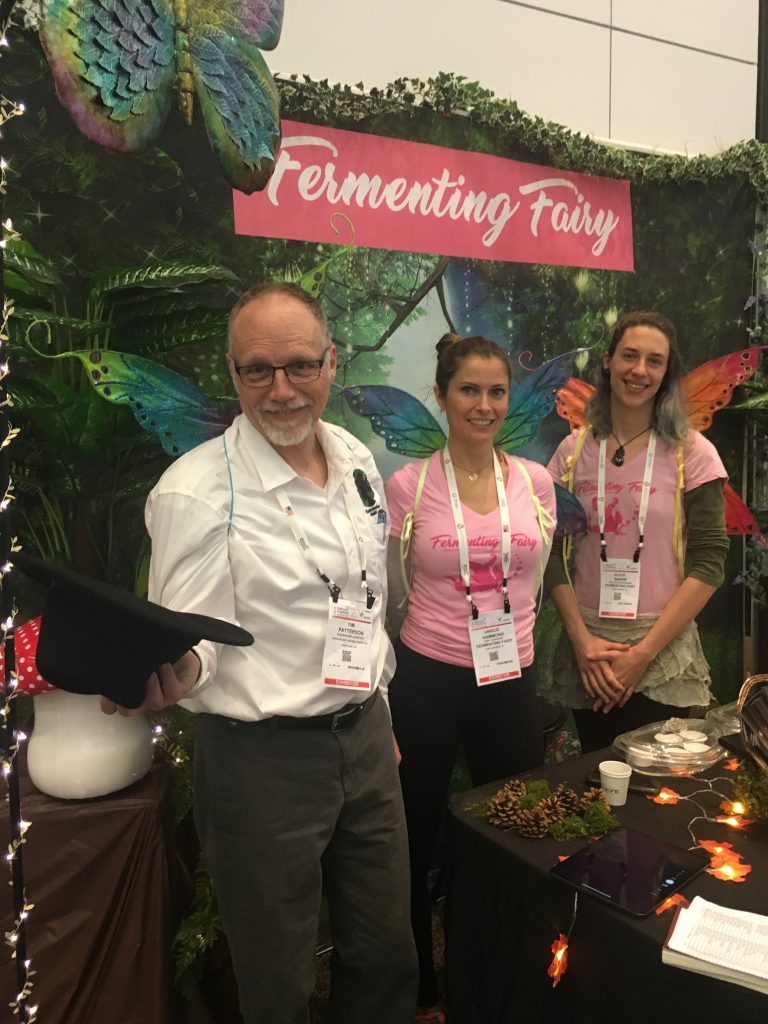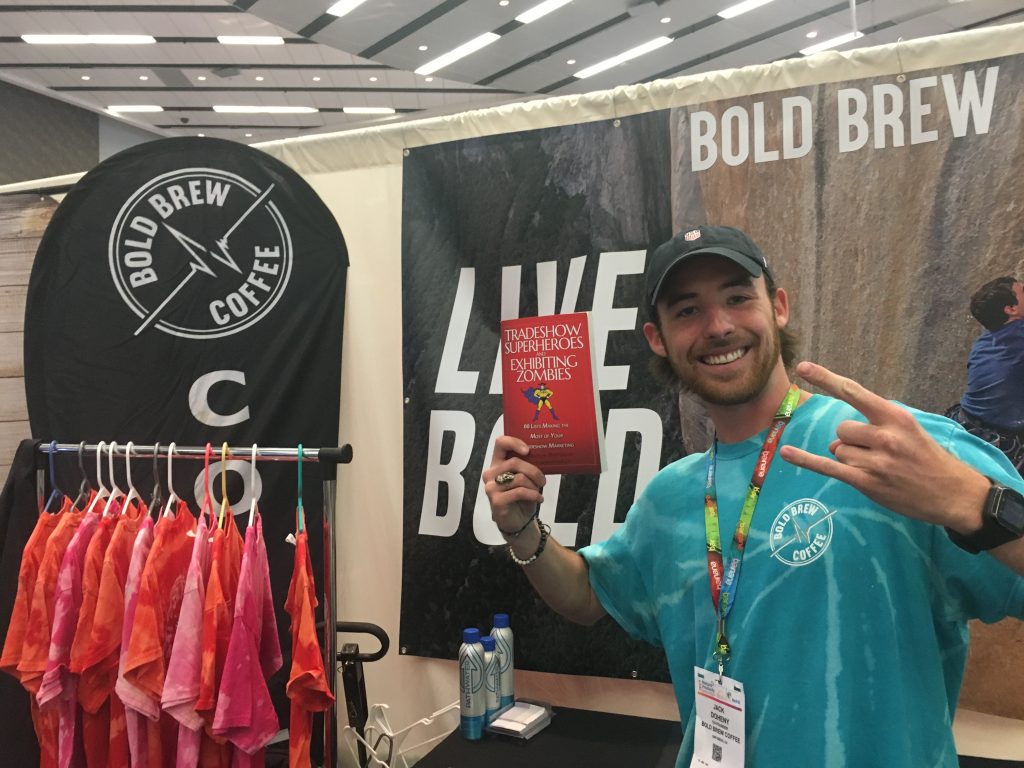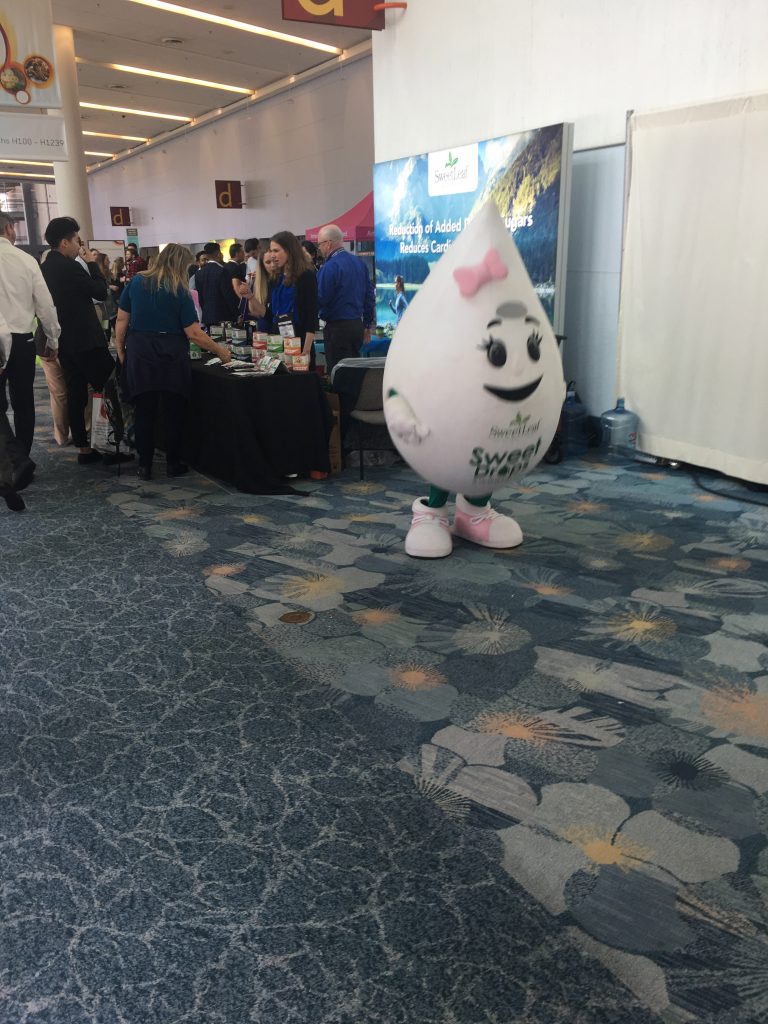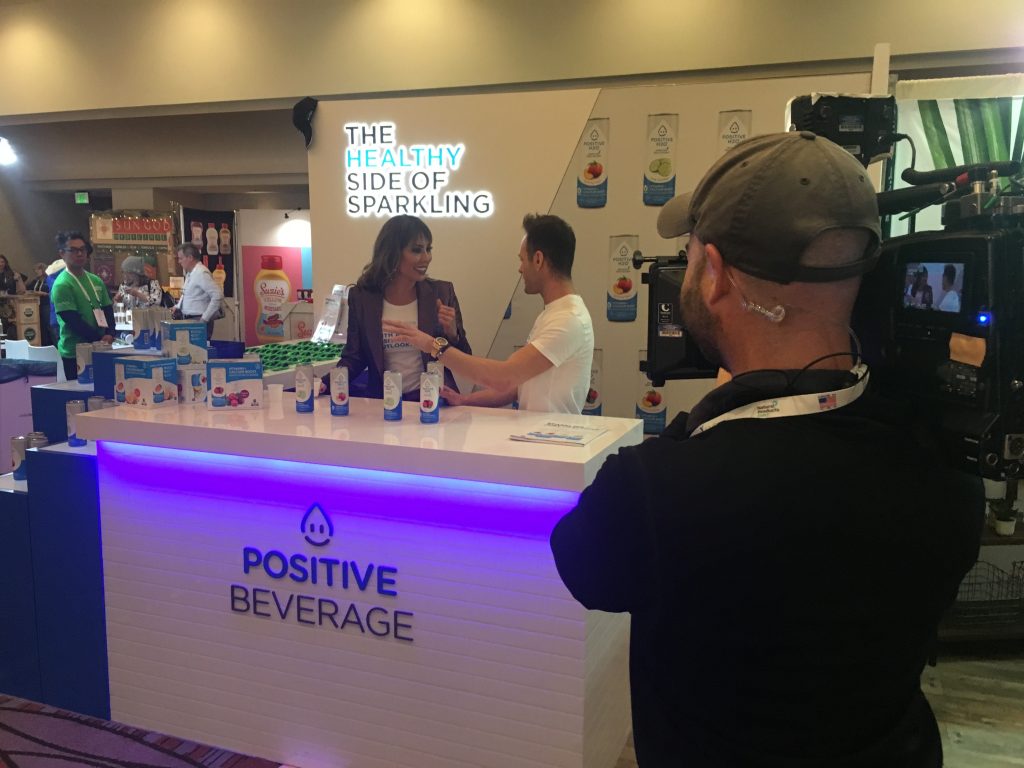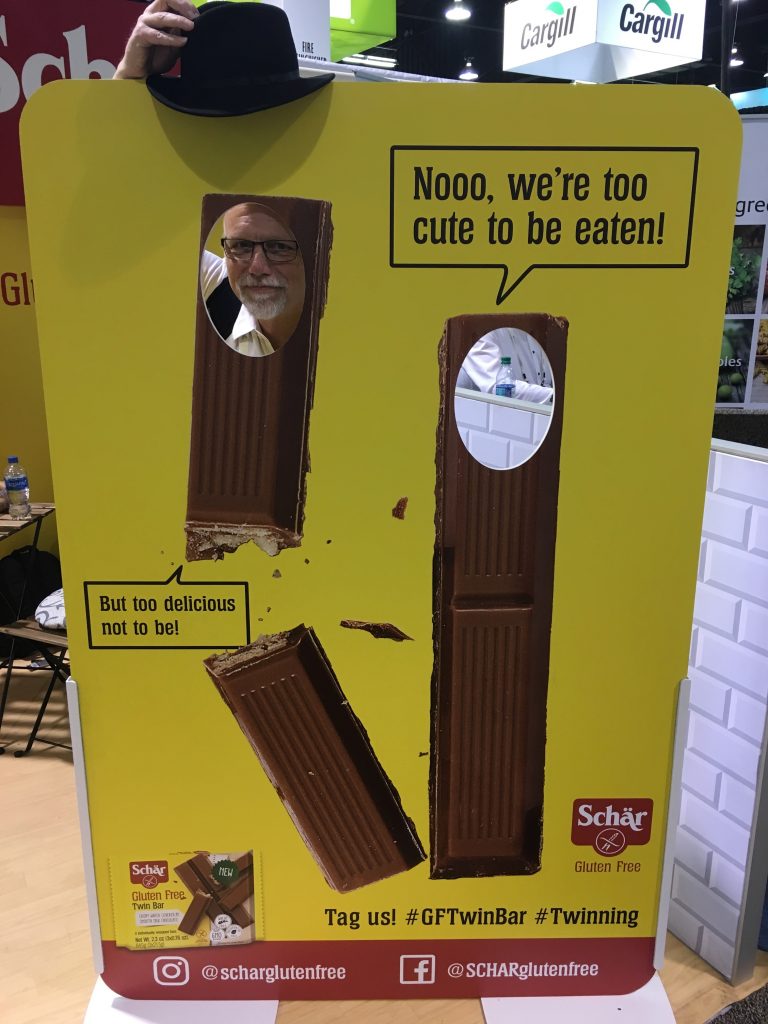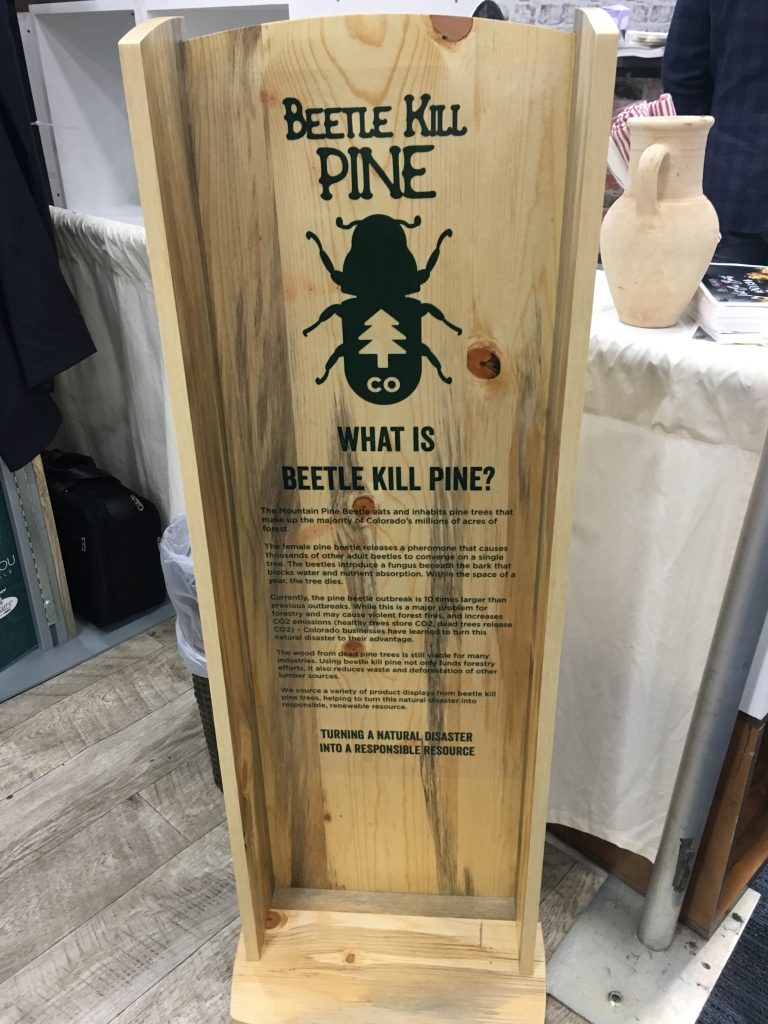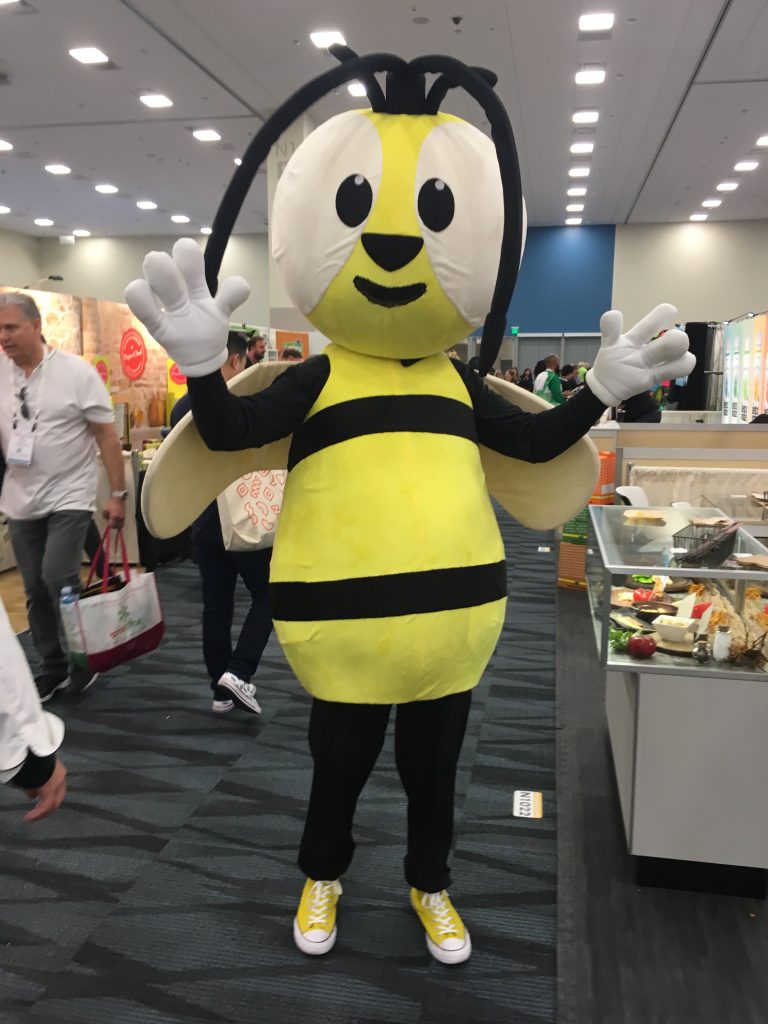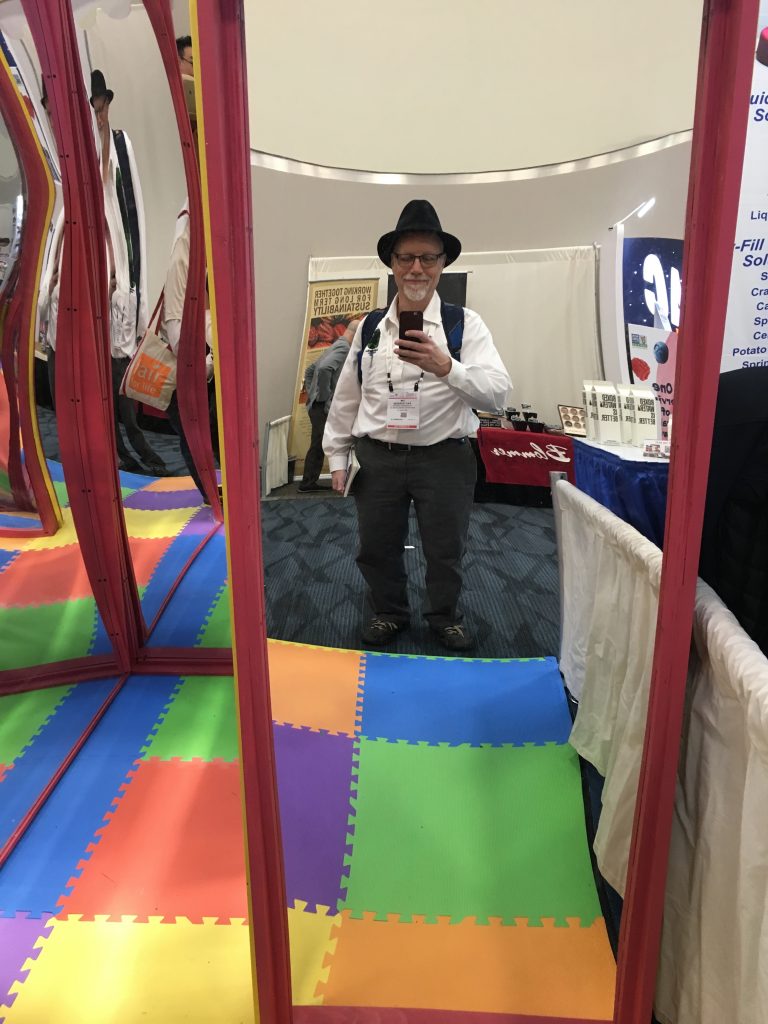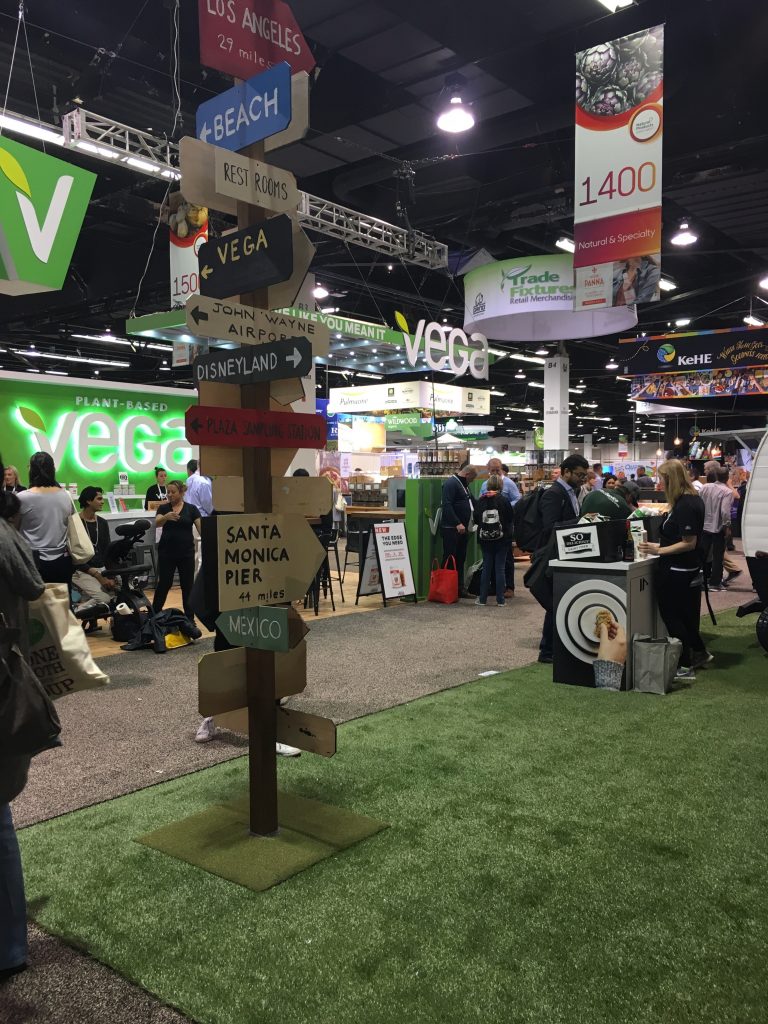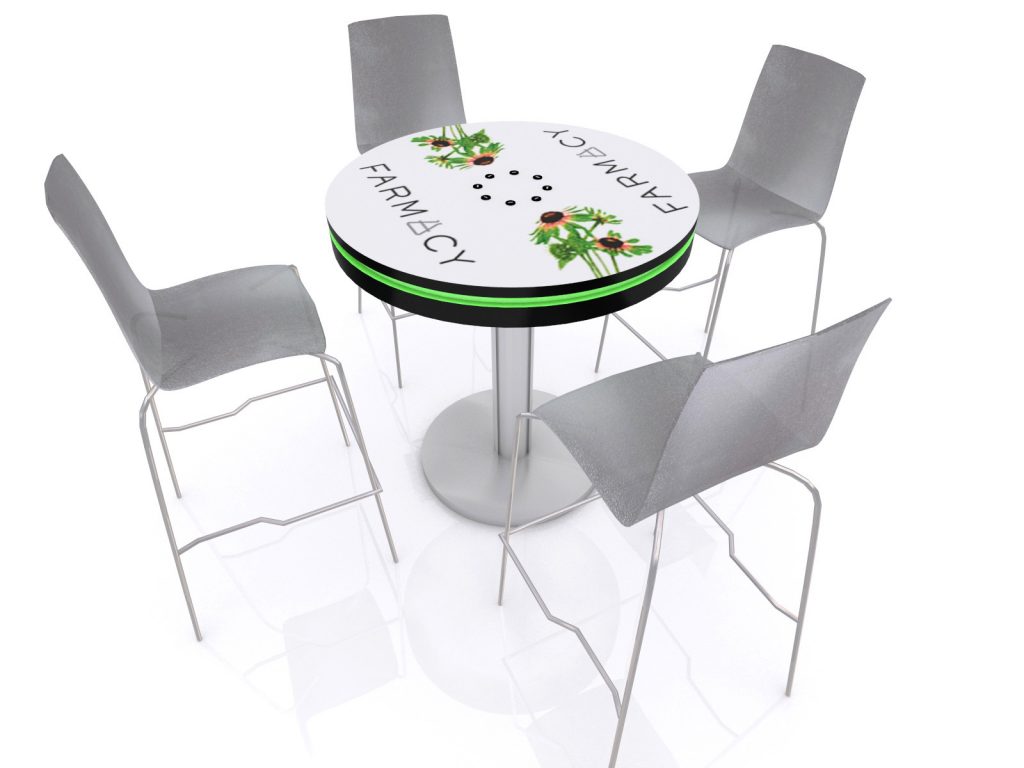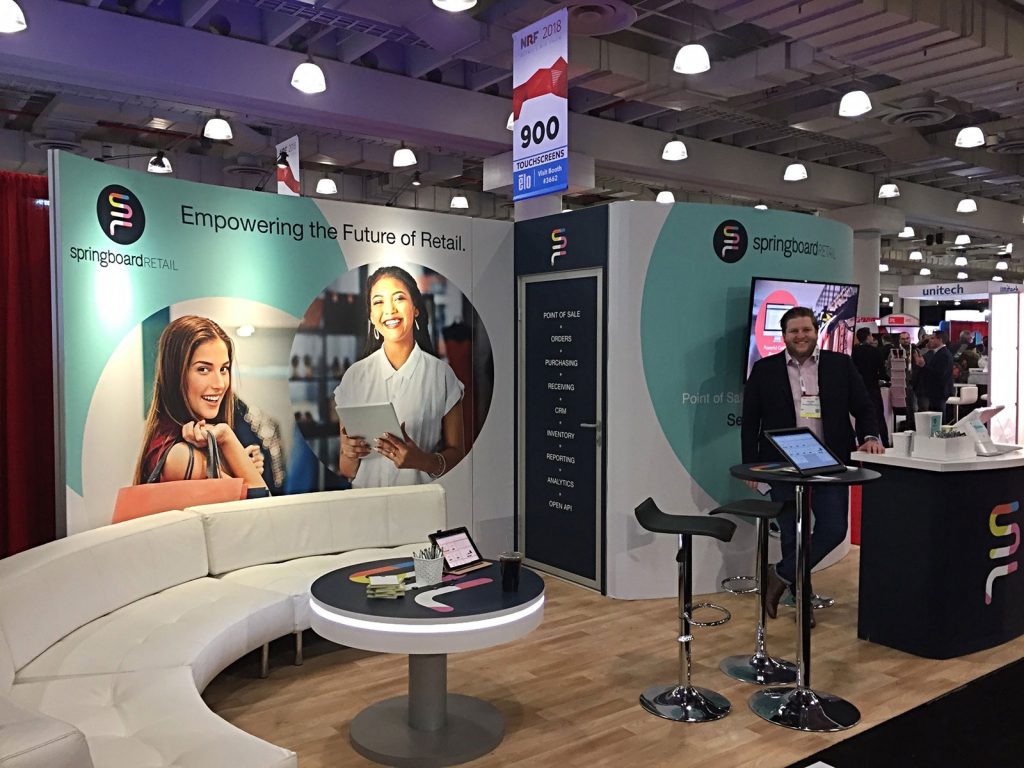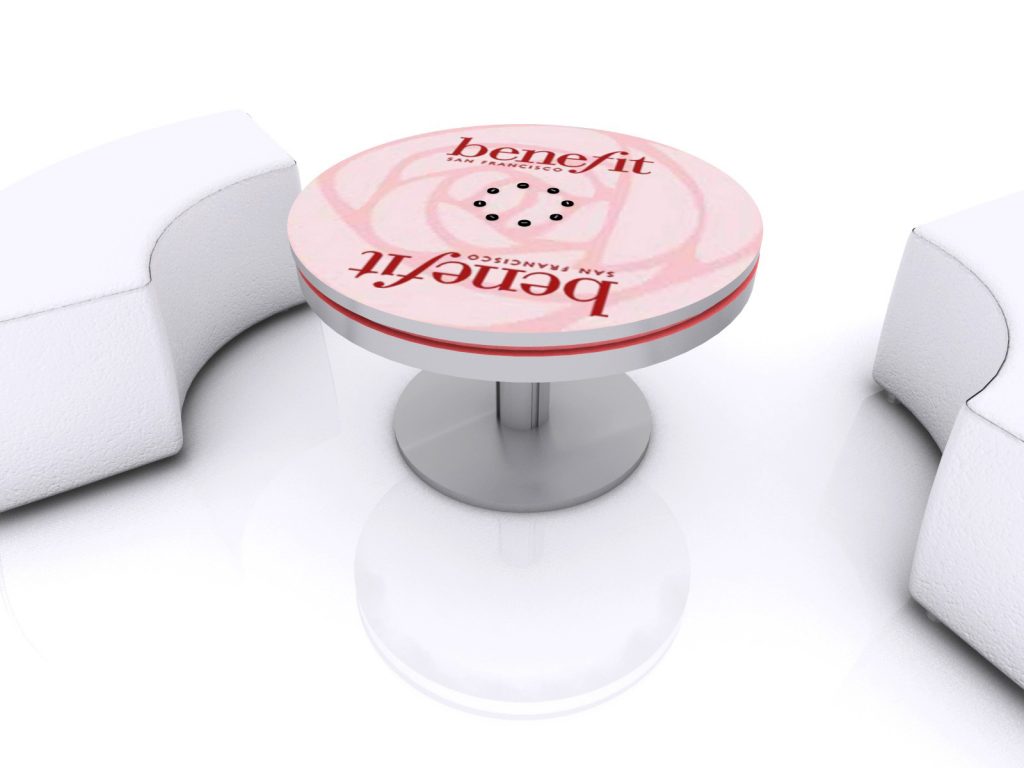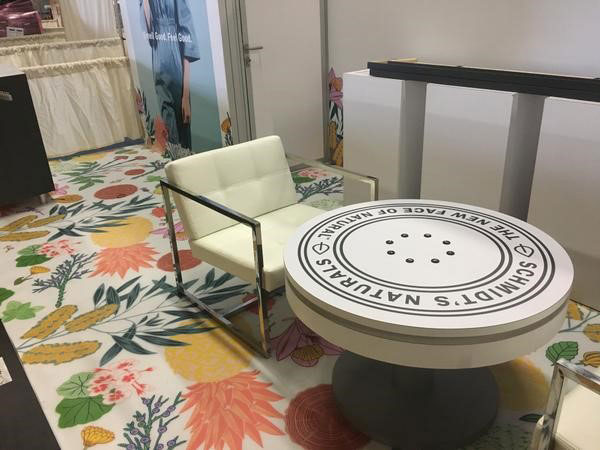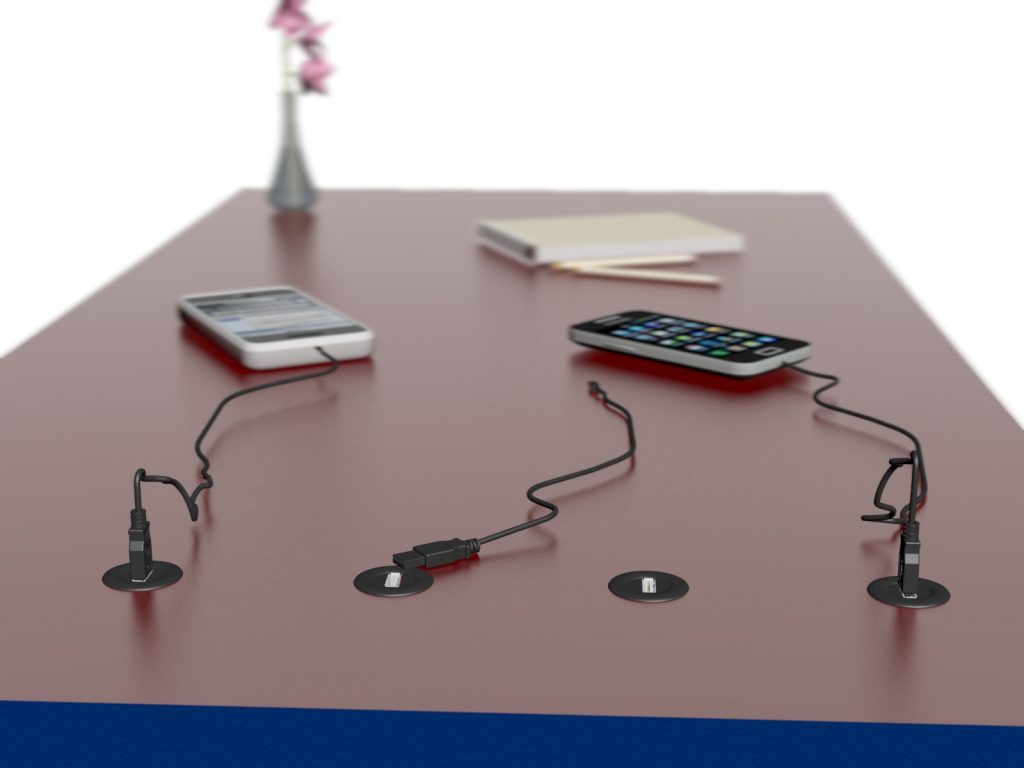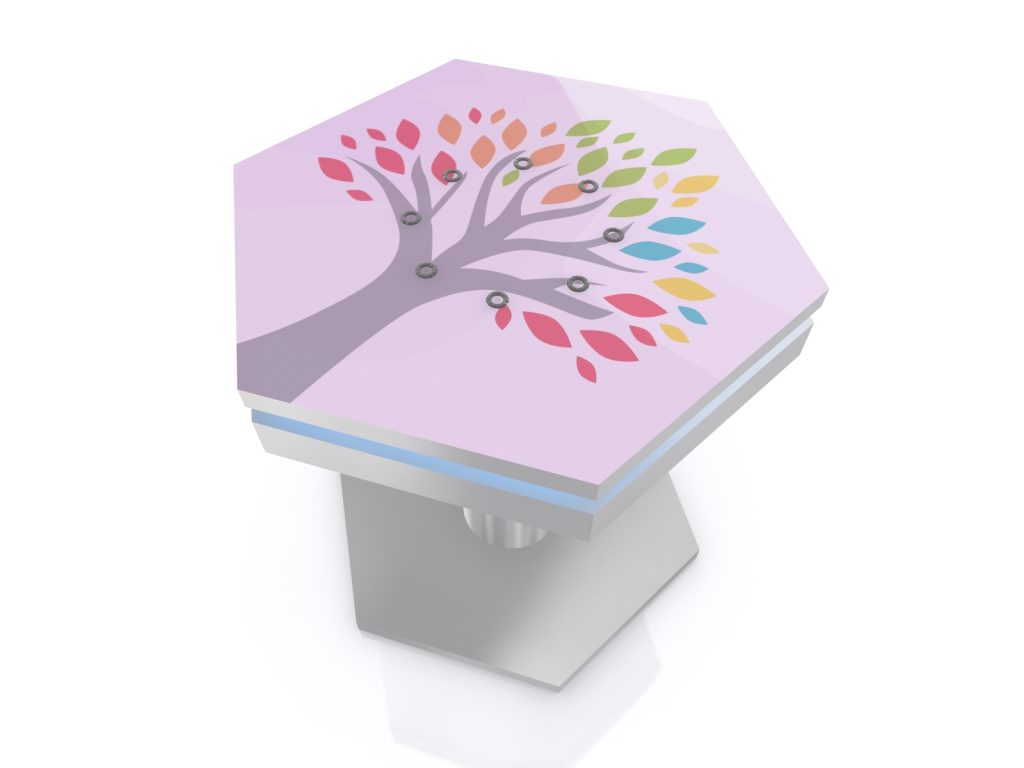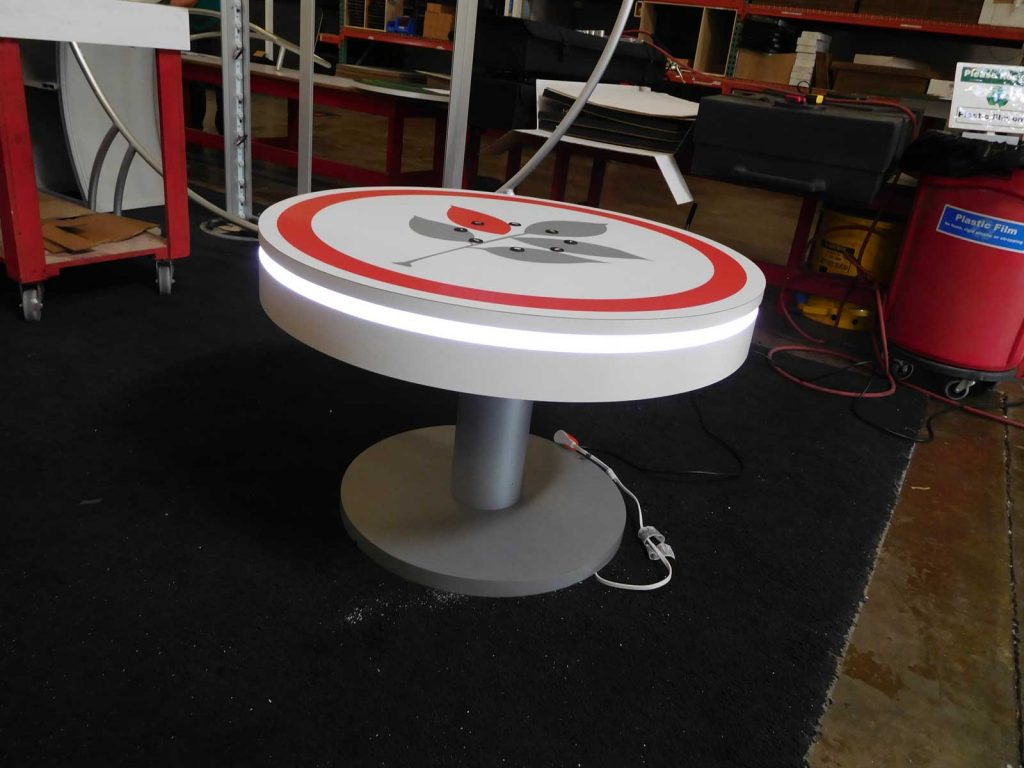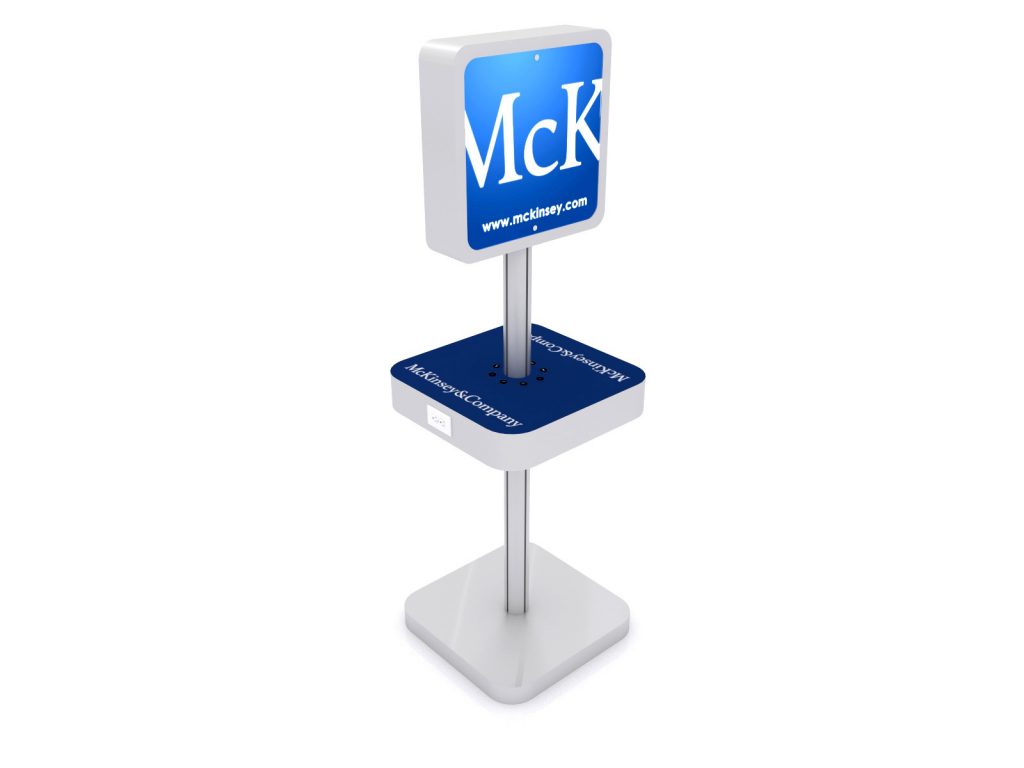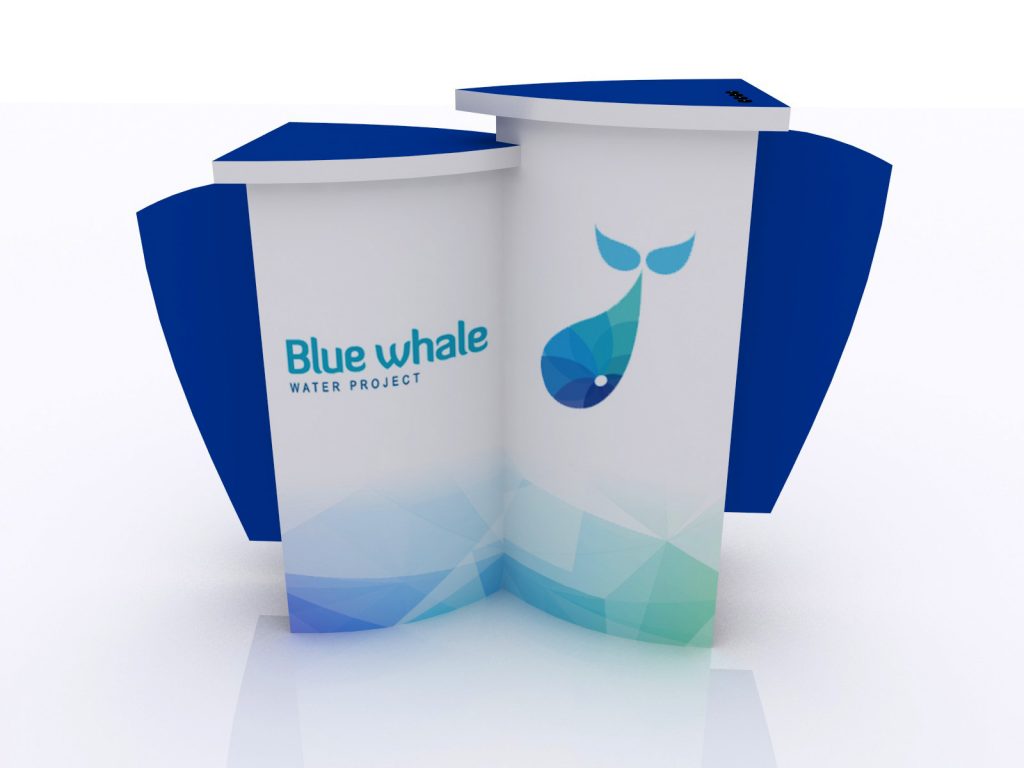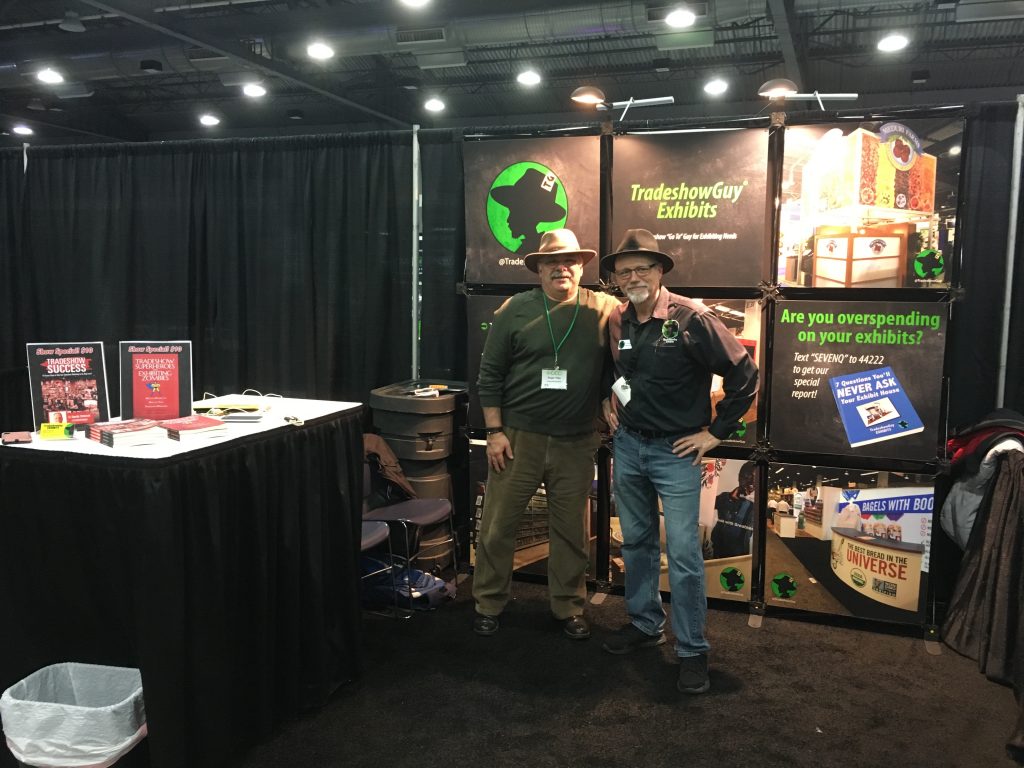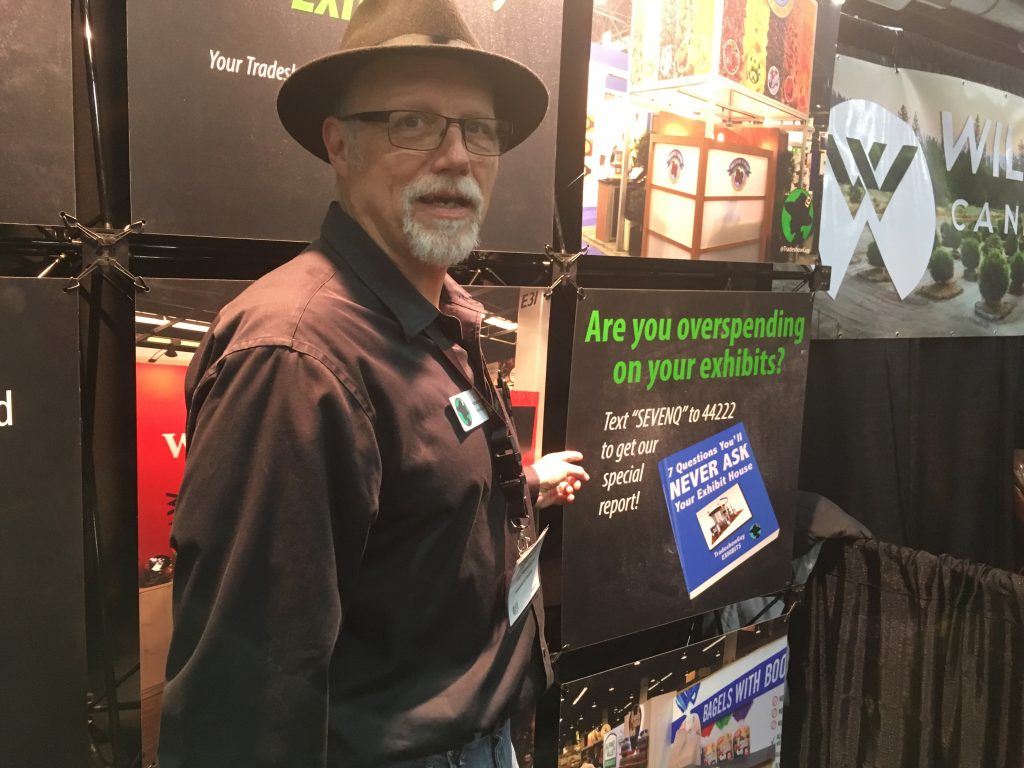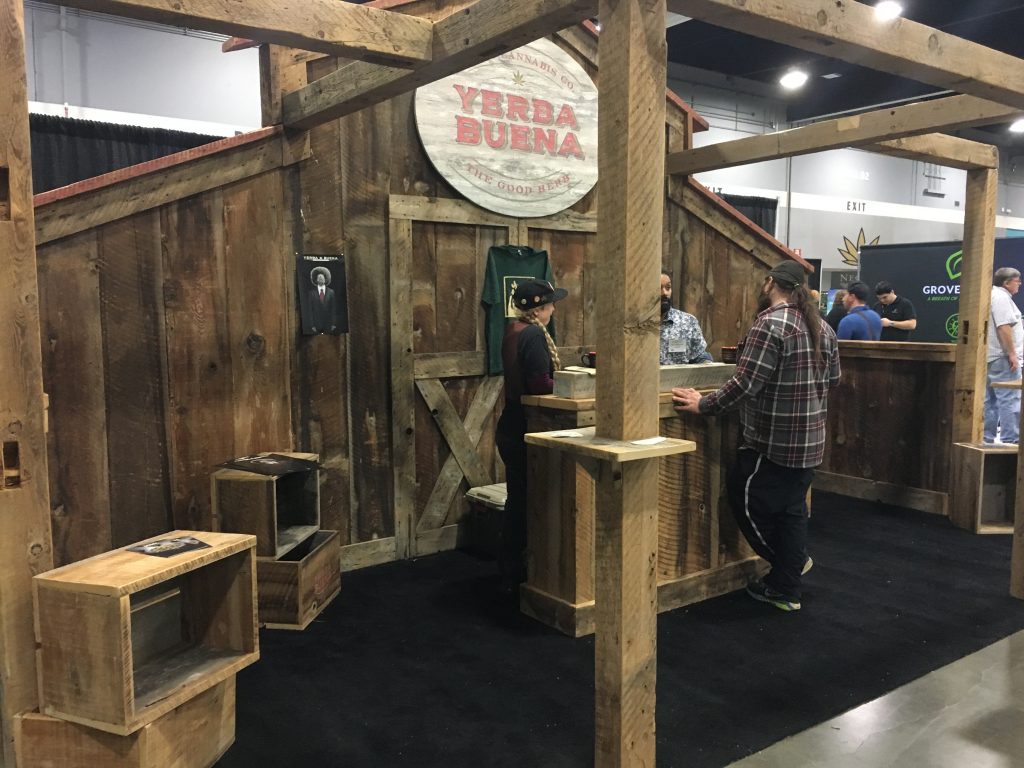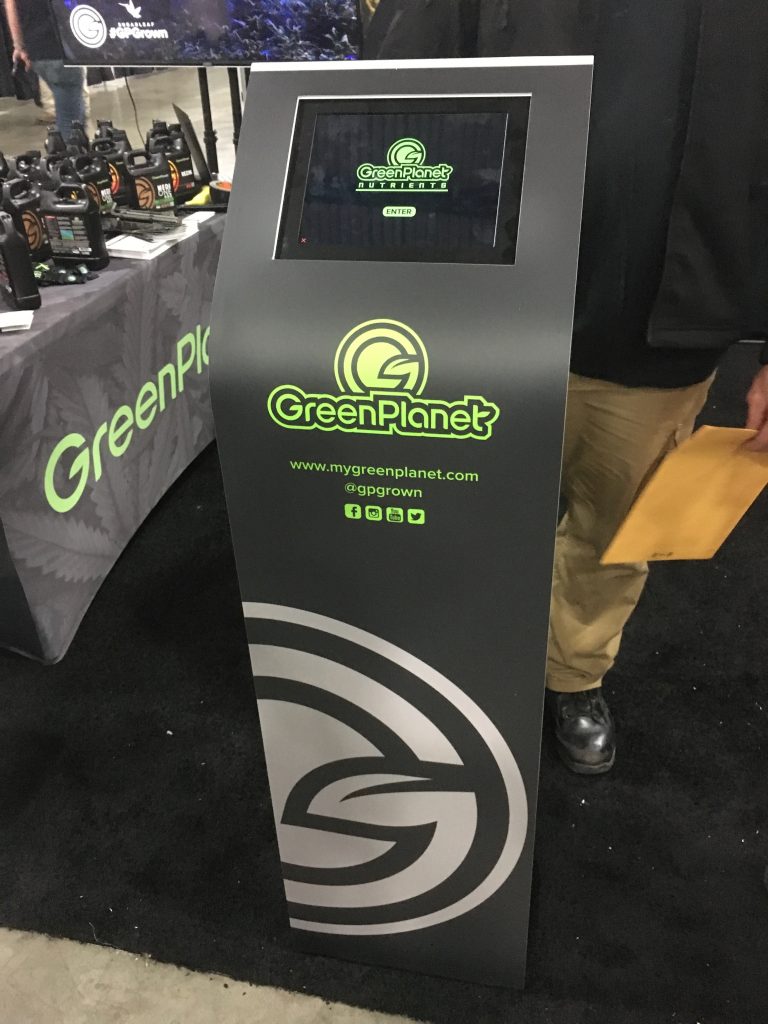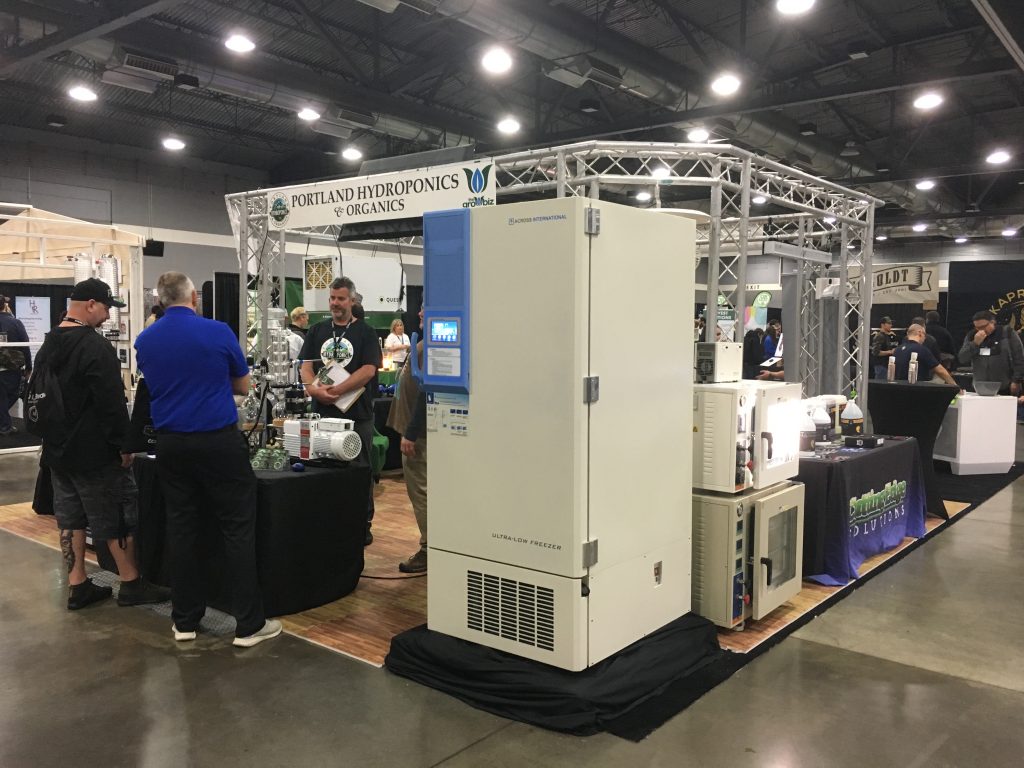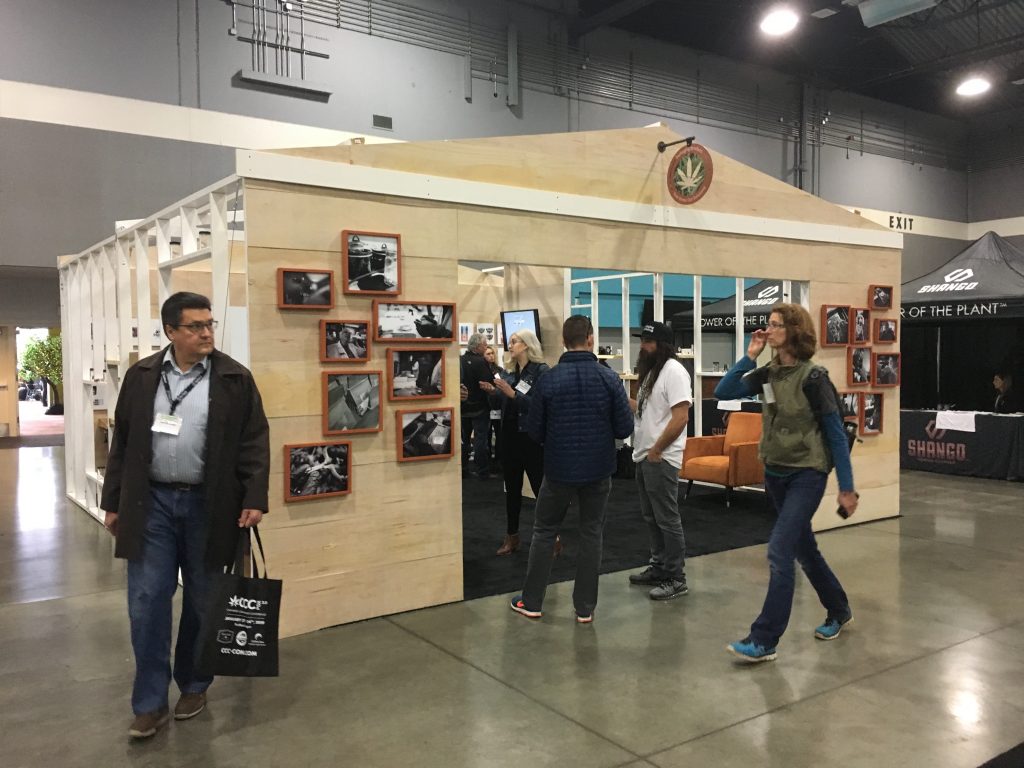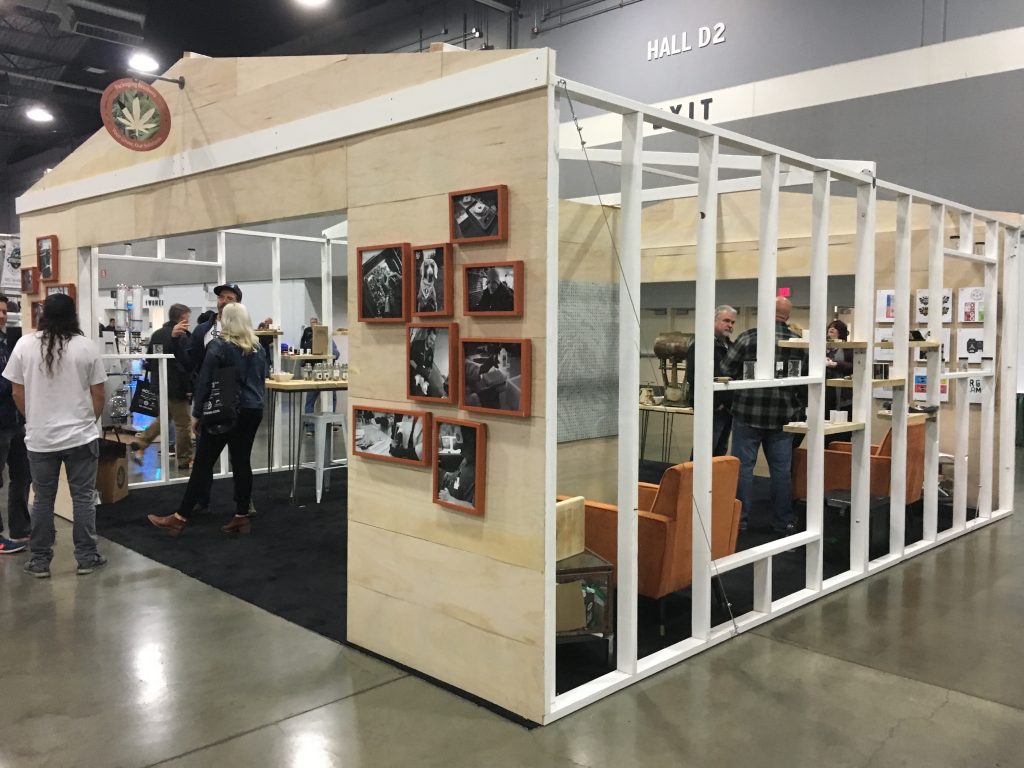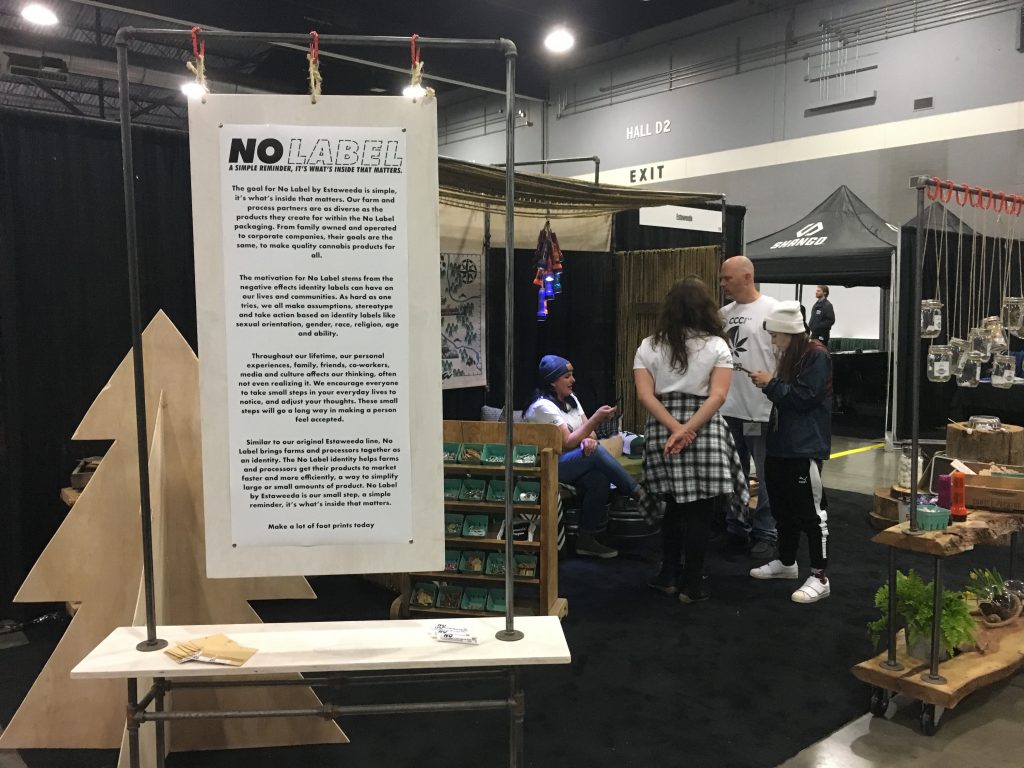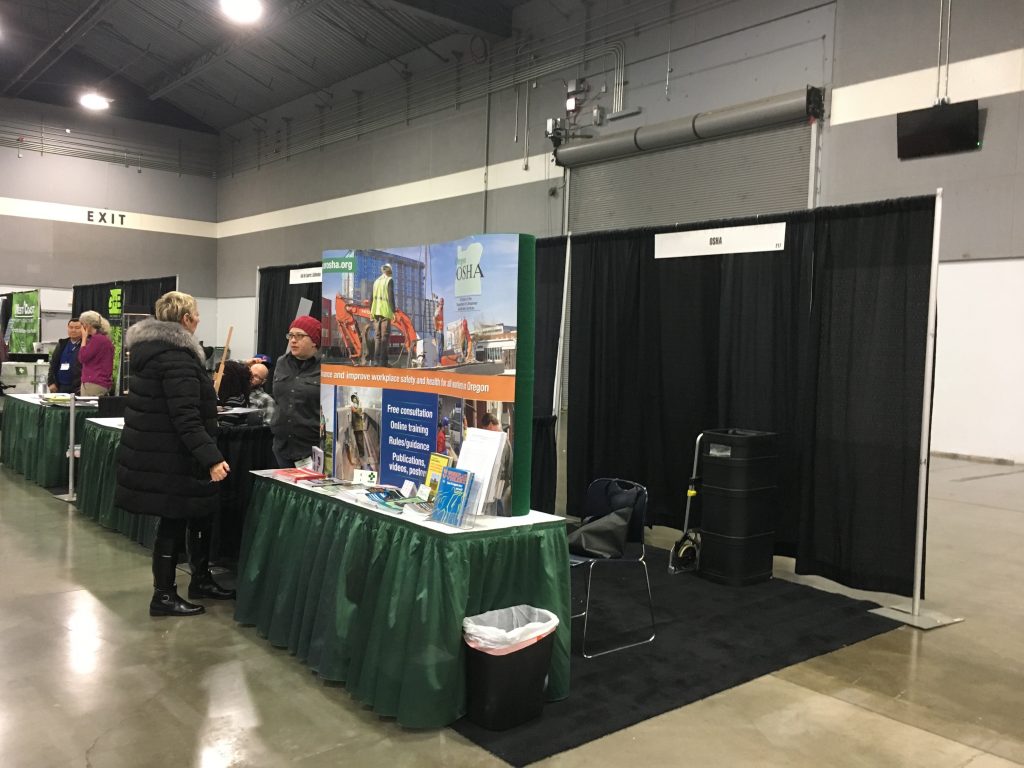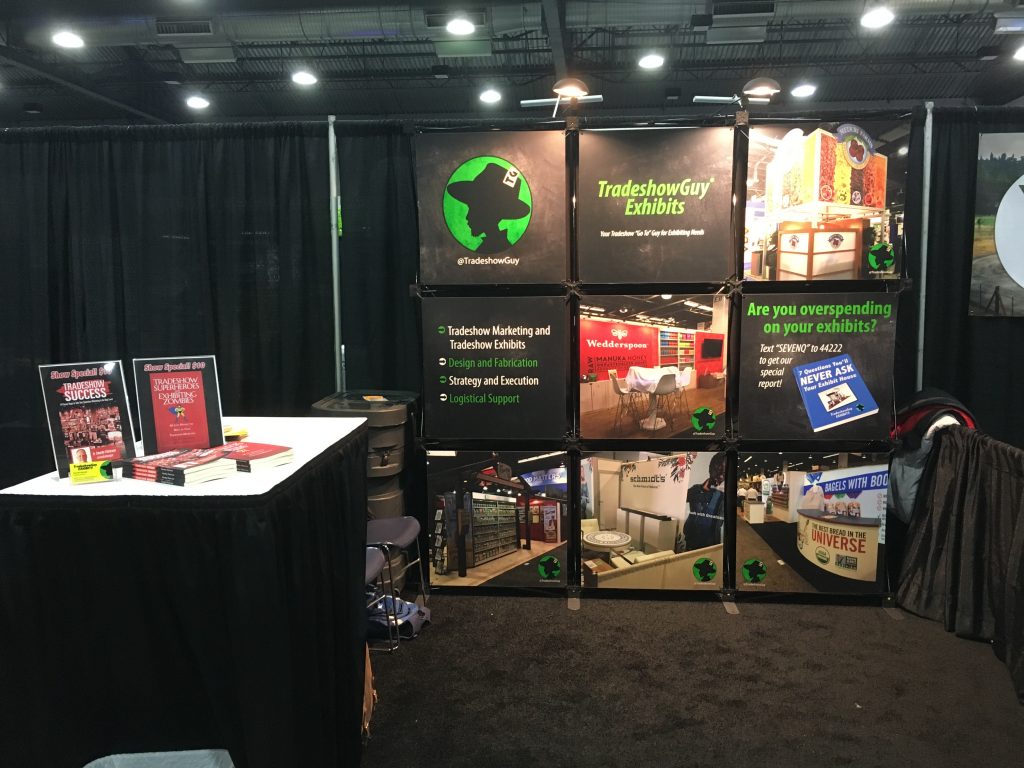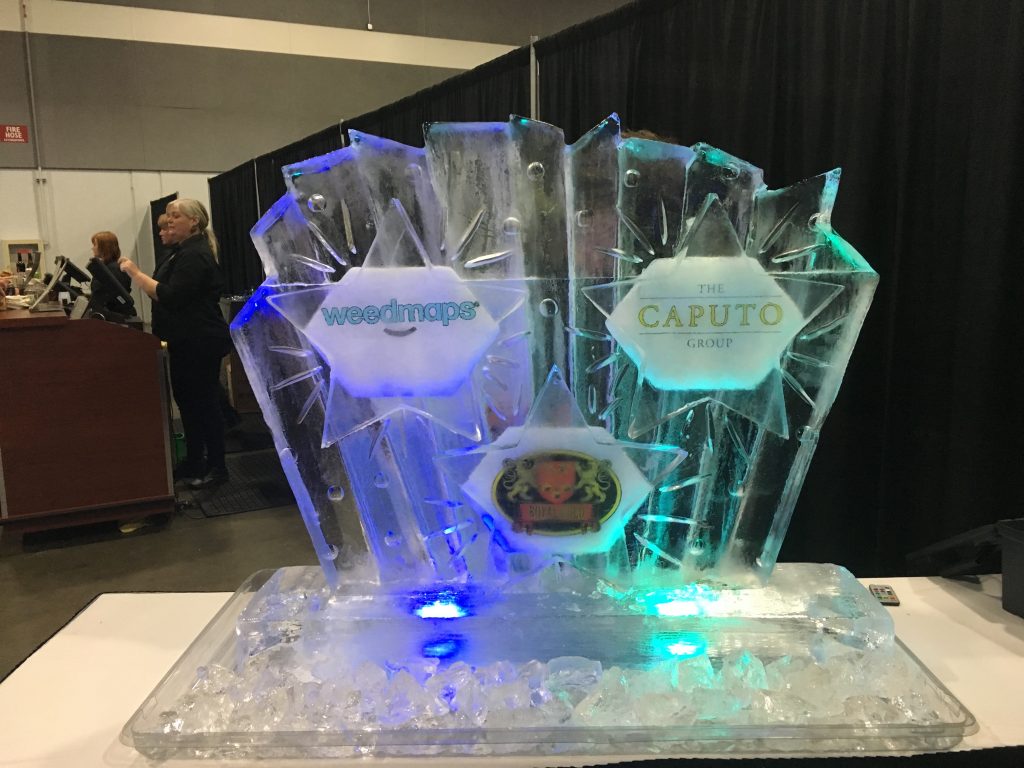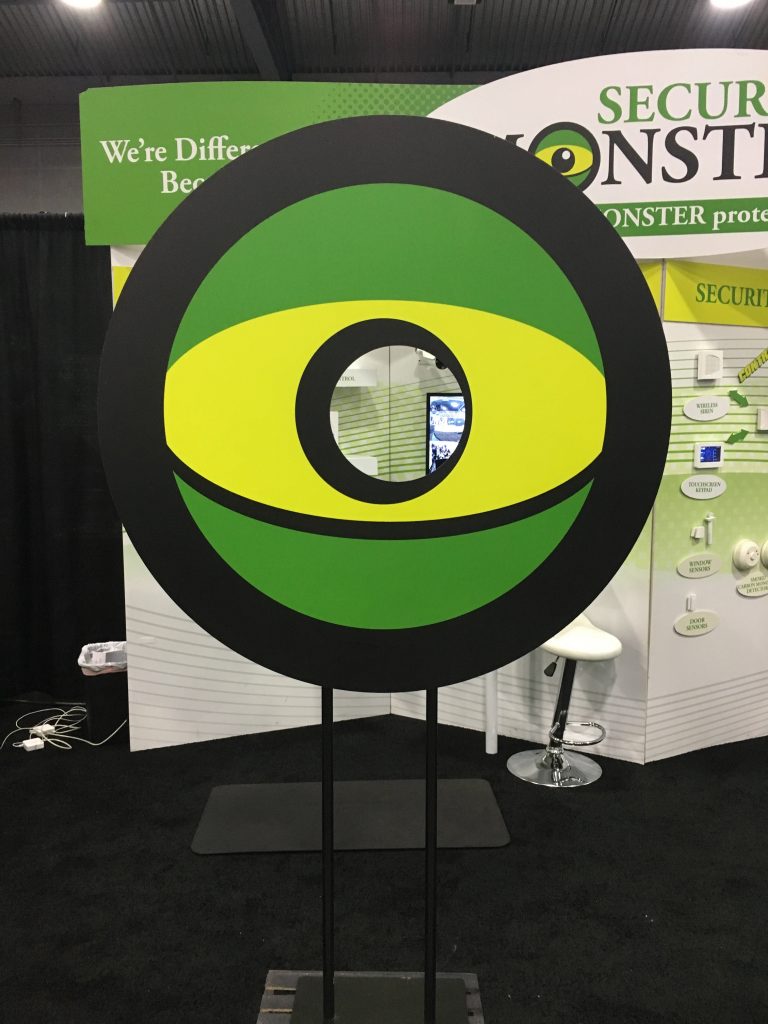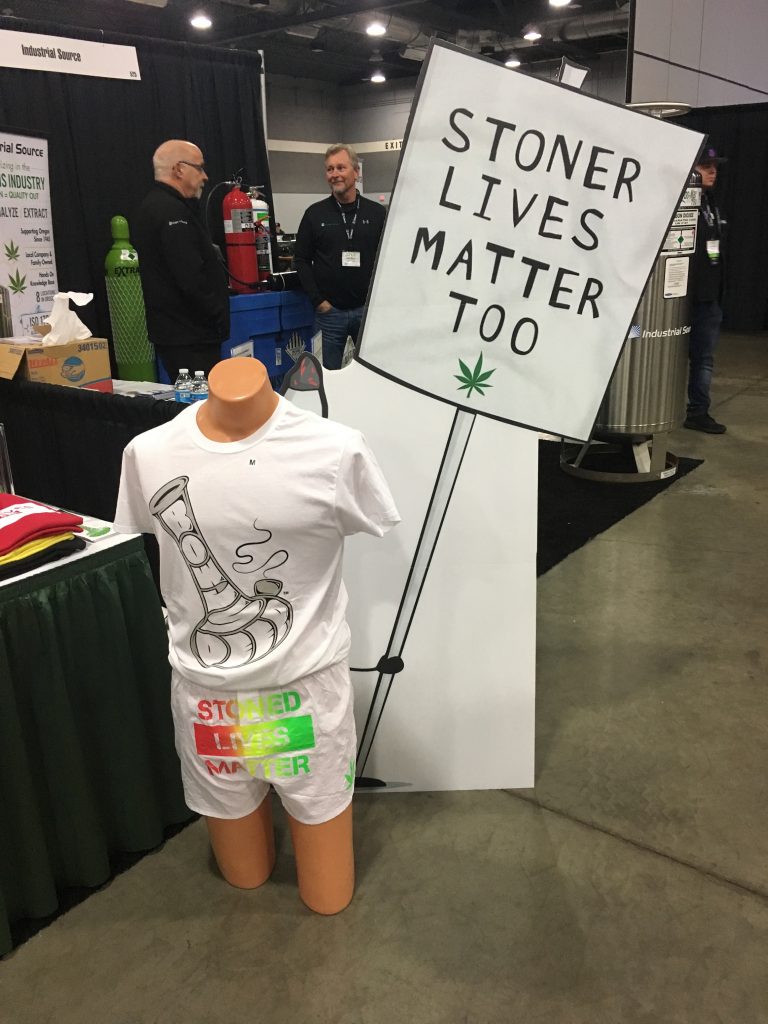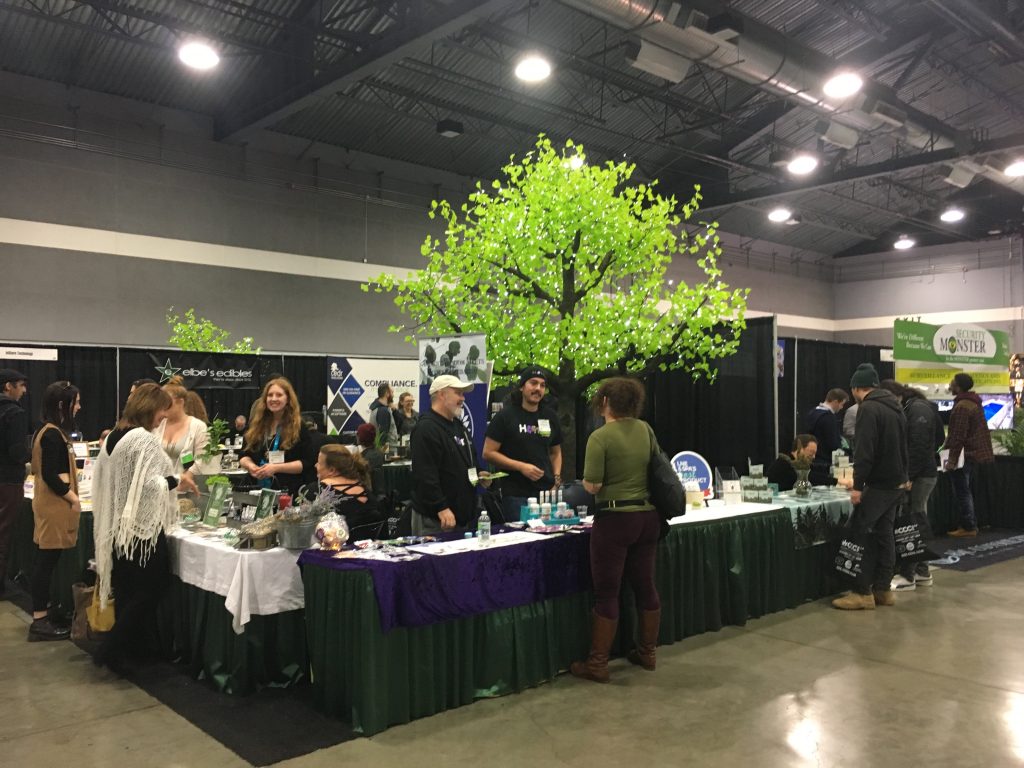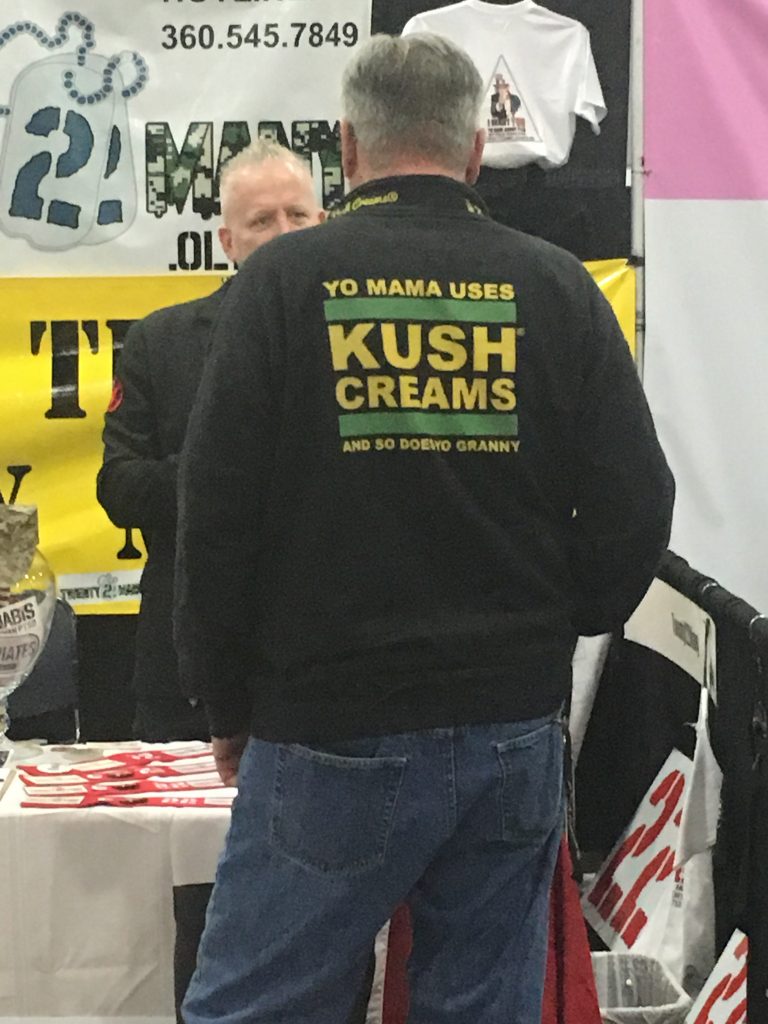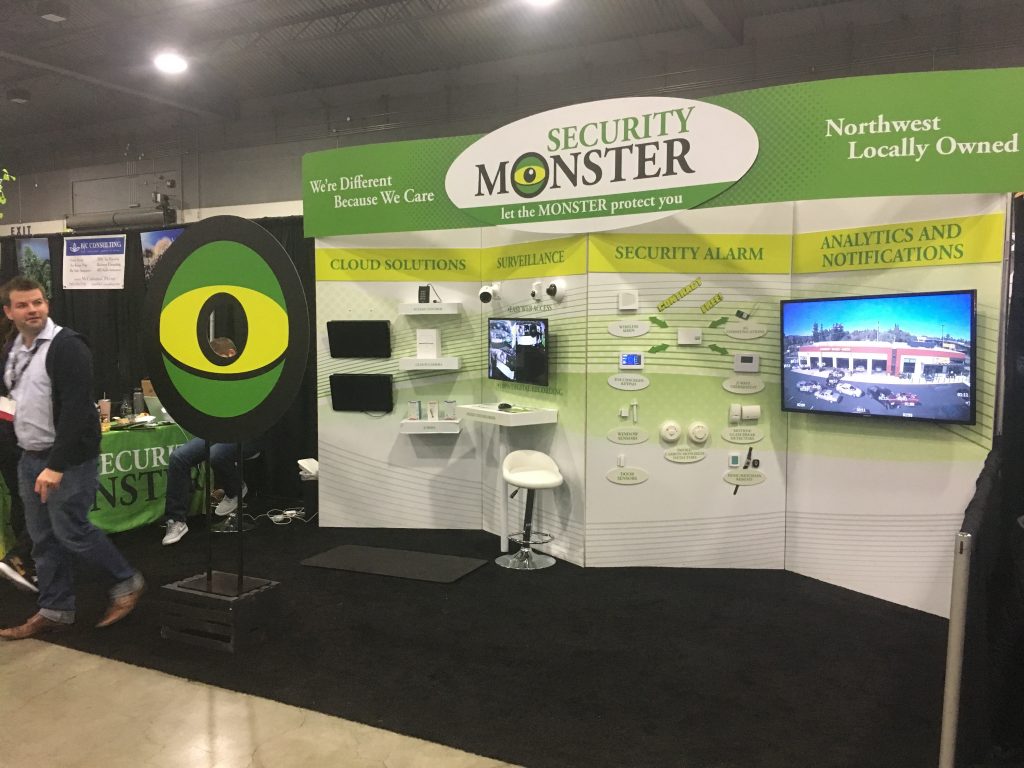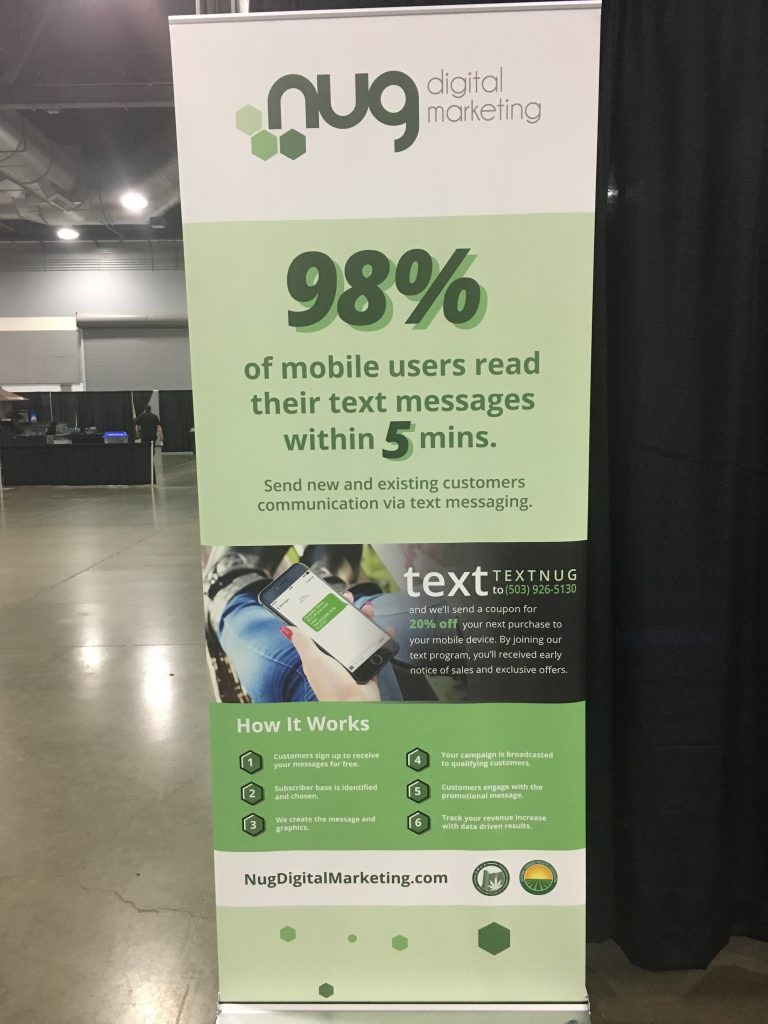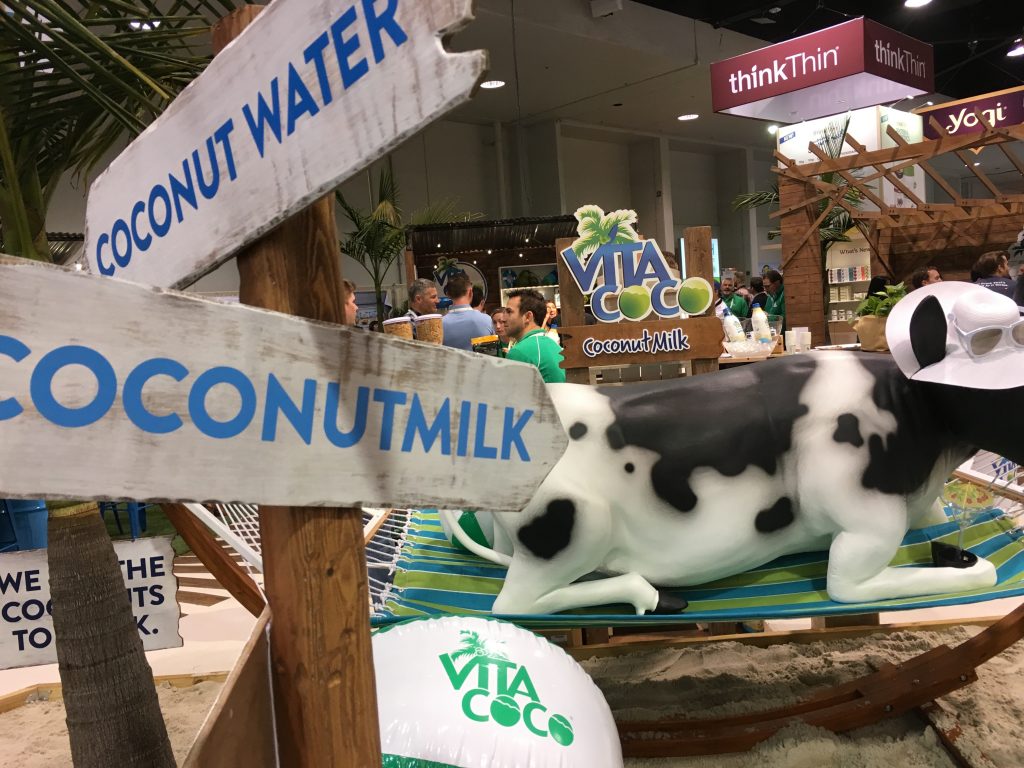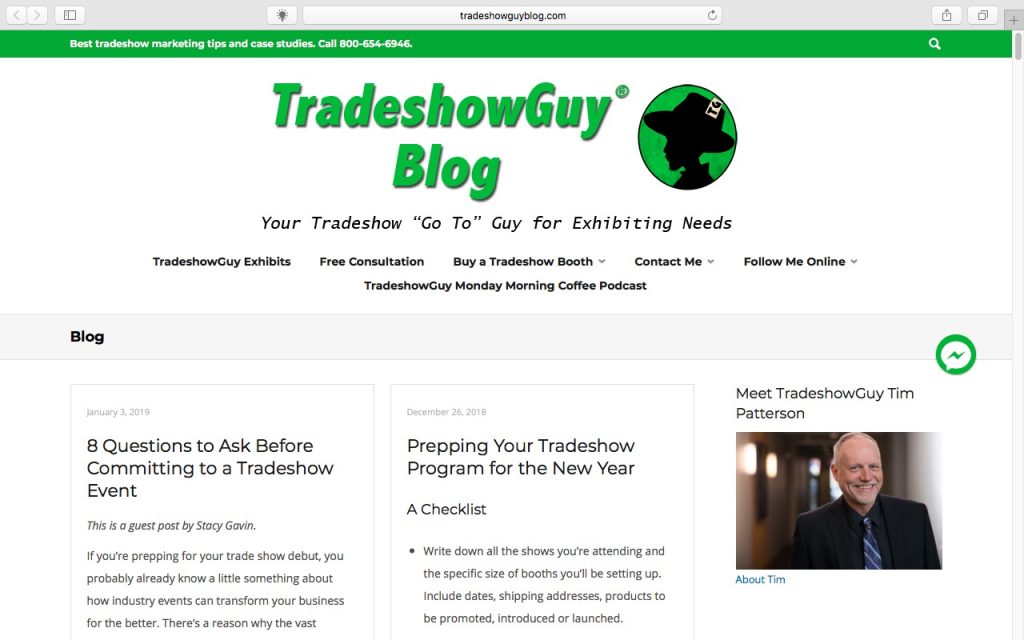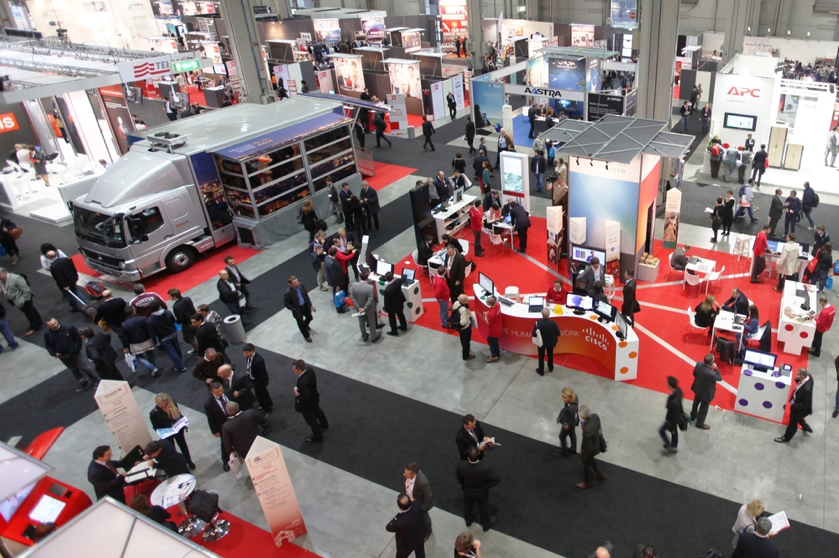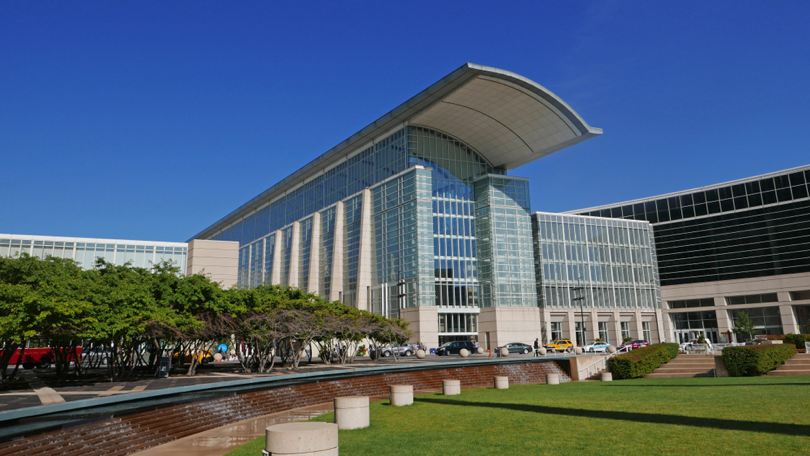TradeshowGuy Exhibits: Our Expo West Projects
This year, our company TradeshowGuy Exhibits, had a great showing at Natural Products Expo West. In fact, our best ever, as we introduced three new clients and five new projects. Let’s take a look:
Schmidt’s Naturals
Schmidt’s Naturals has been a client for a few years, but this year they stepped up from a 10×20 custom exhibit to a brand new 10×40 custom exhibit. The brand, which was purchased in late 2017 by Unilever, has seen fast growth for an expanding product line that was created basically out of a Portland garage a decade ago.
The new 10×40 custom booth features backlit panels from side to side, a generous closet and a pair of LED-highlighted display podiums with storage. The design is clean with lots of white space, and is set off by colorful iconic custom flooring.
Wildbrine
Wildbrine’s designer worked with our designer to come up with a clean and colorful 10×20 design that featured a bright green design for the flooring, and bright colors for the back wall and side return walls. There is an inset shelving unit in the closet, lit by white LEDs and a set of RGB custom-controlled lights.
Organixx
Another custom 10×20, this one highlighted by a large mounted monitor, a big lightbox and a custom product display. Two similar counters for drink machines and literature and an LED-highlighted round charging table topped it off, along with a white oak printed rollable vinyl floor.
Hop Tea
Hop Tea, out of Boulder, Colorado, is a company founded last May! They found us online and we partnered with Salem’s TimbrandMoss to create a custom reclaimed barnwood back wall and counters to serve their brewed tea through kegerators. The back wall accommodated a rented refrigerator. The front counter was highlighted by a burnt-in logo. We also created a cut-out vinyl-wrapped 3D version of thei rlogo to hang from the back wall. Their product won a Nexty award for Best New Ready-to-Drink Beverage. And their exhibit went over really well in the Hilton Hot New Products hall!
Hyland’s Homeopathic
I go back over a decade with Hyland’s. The company I worked for back in 2005, Interpretive Exhibits (since closed due to retirement), designed and built a unique koa wood 10×20 exhibit. They’ve used it ever since – except for this year. They wanted a brighter, simpler approach, and we helped put together a large 8′ x 20′ single-photo pop-up back wall. Striking!
Graphic Updates: Bob’s Red Mill, Wedderspoon and Dave’s Killer Bread/Alpine Valley
Long-time clients Bob’s Red Mill, Wedderspoon and Dave’s Killer Bread had us do some updates. For Bob’s Red Mill, we coordinated the creation of a 42″ touchscreen video unit in the alcove portion of their booth, along with graphic updates throughout the exhibit.
For Dave’s Killer Bread, new graphics included a stark look at second-chance employment for convicted felons on their front counter, and the addition of a video monitor which looped a short video on the issue.
For Wedderspoon Manuka Honey, some more graphic updates. All great clients to work with – and glad to have them all!


